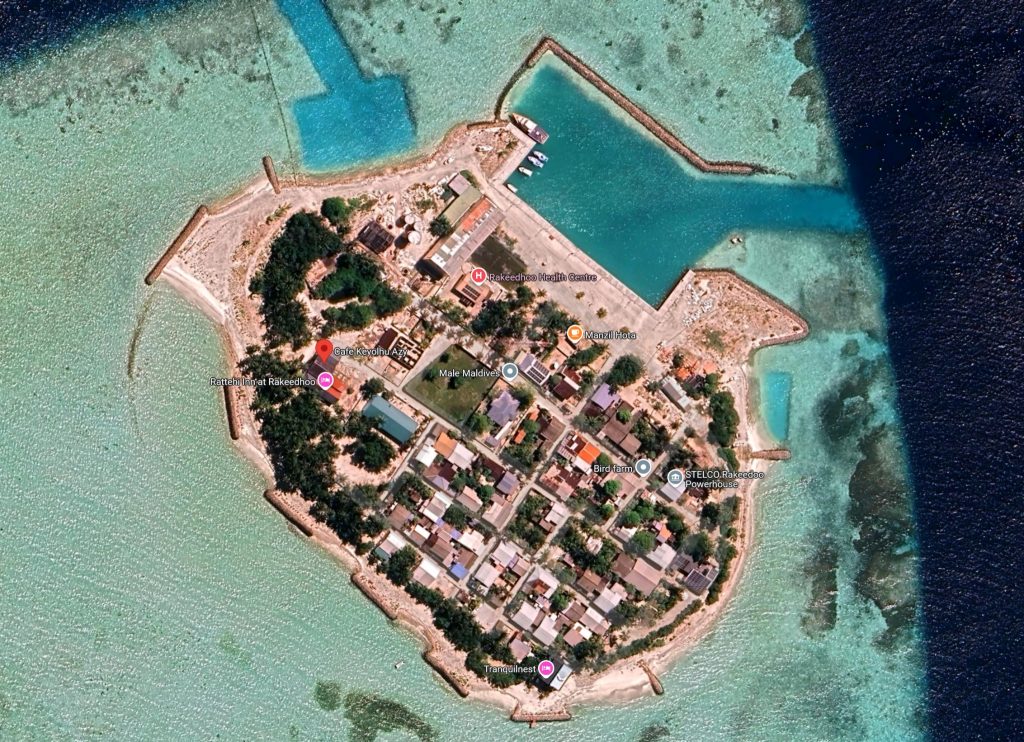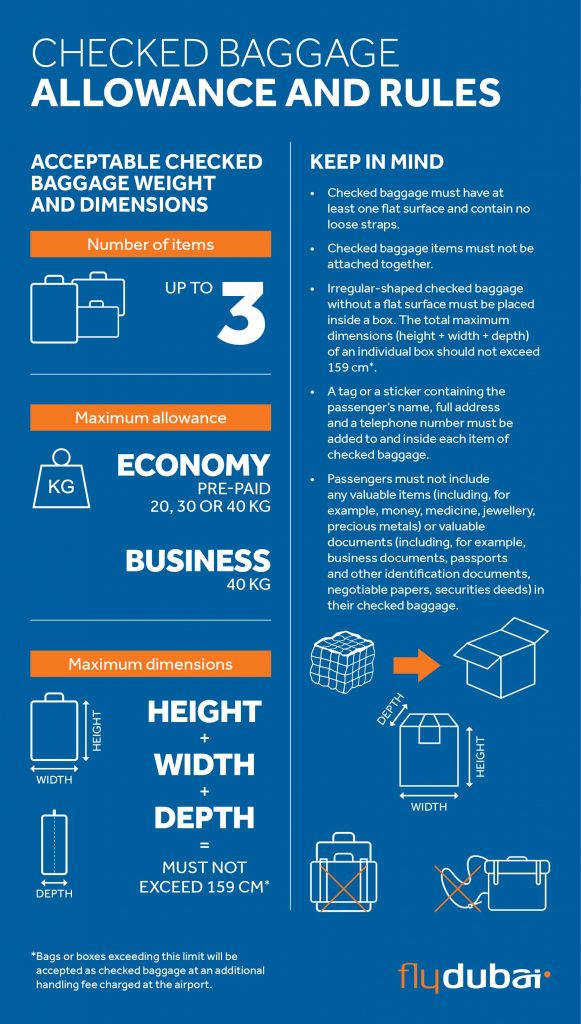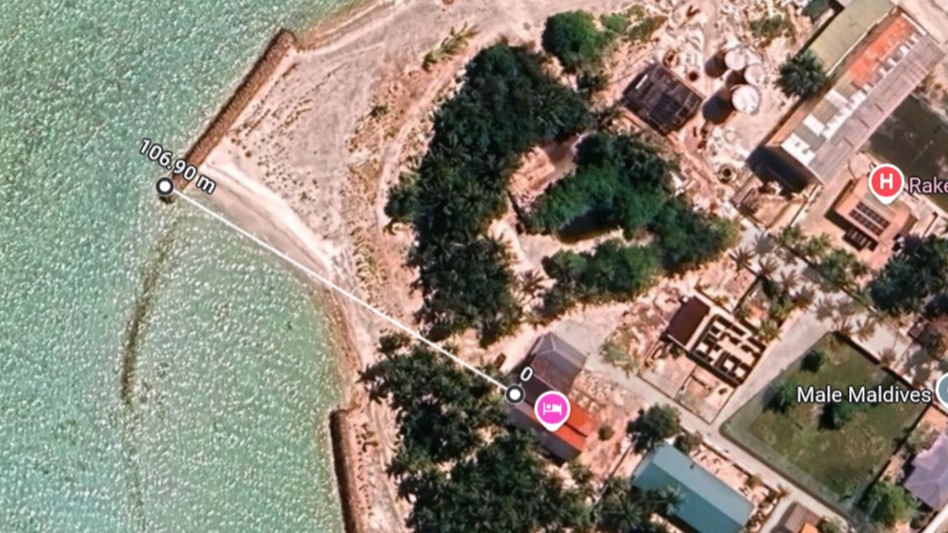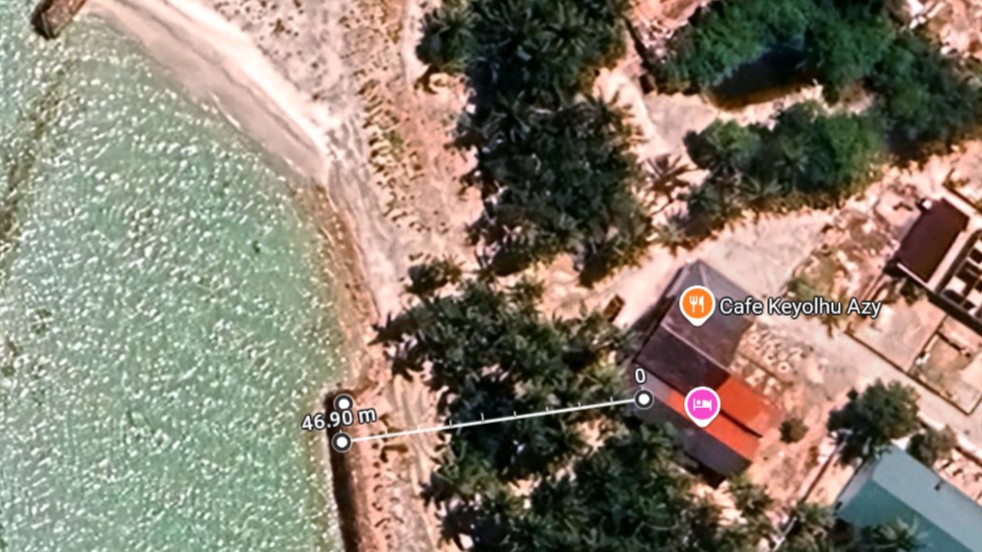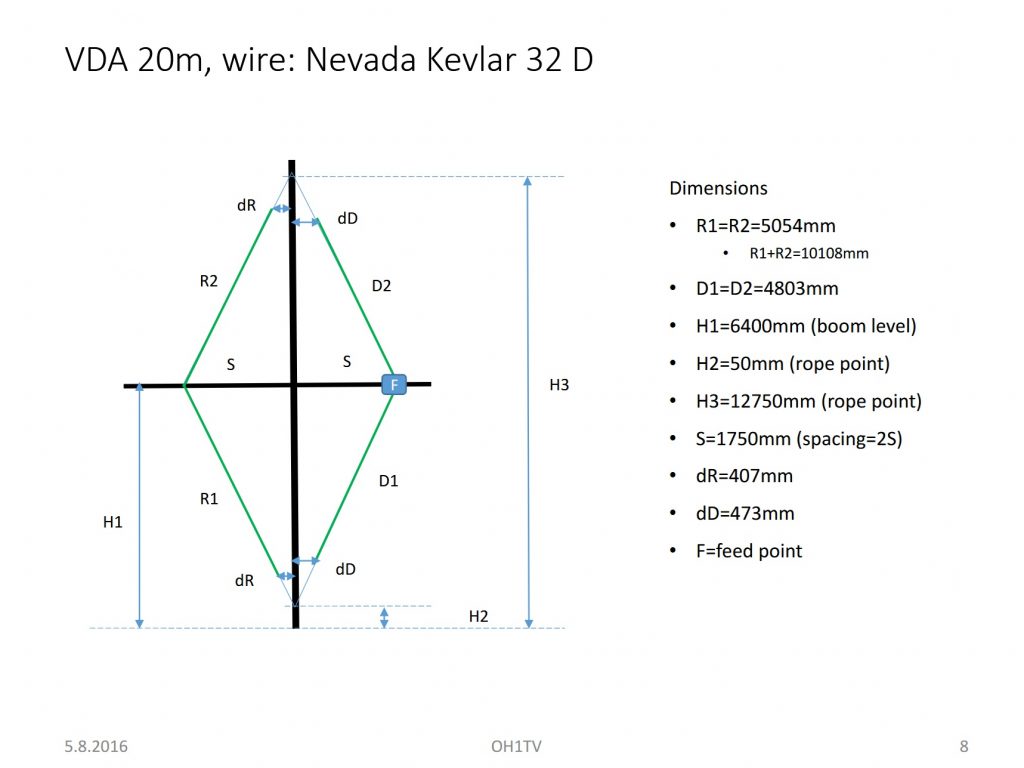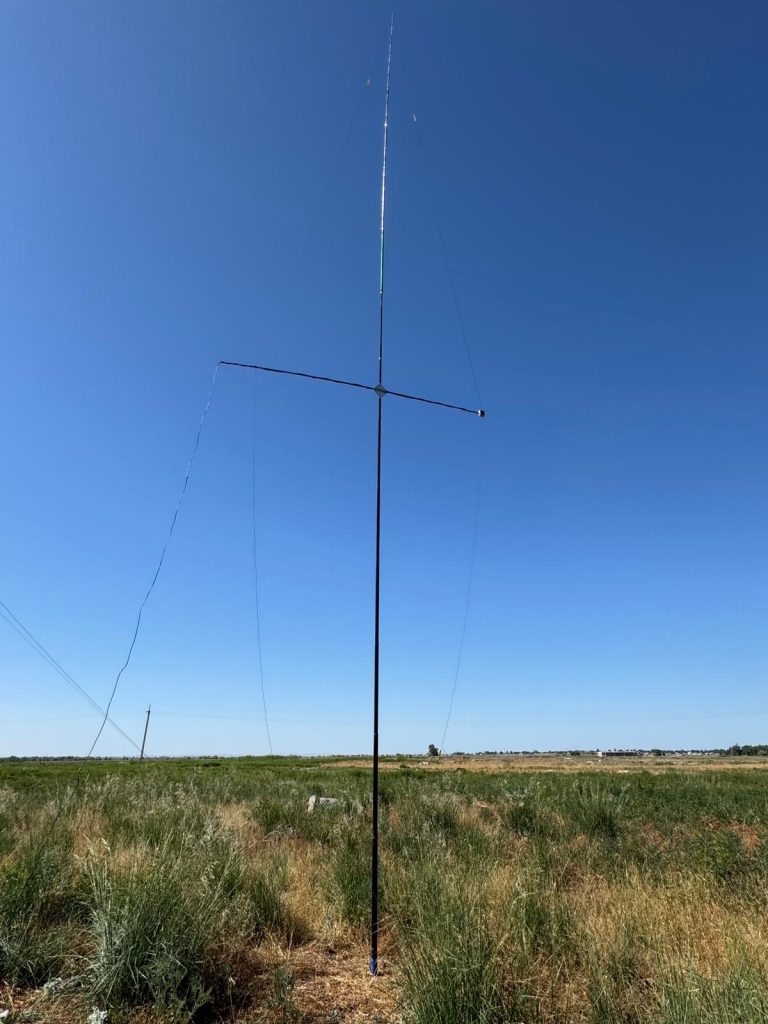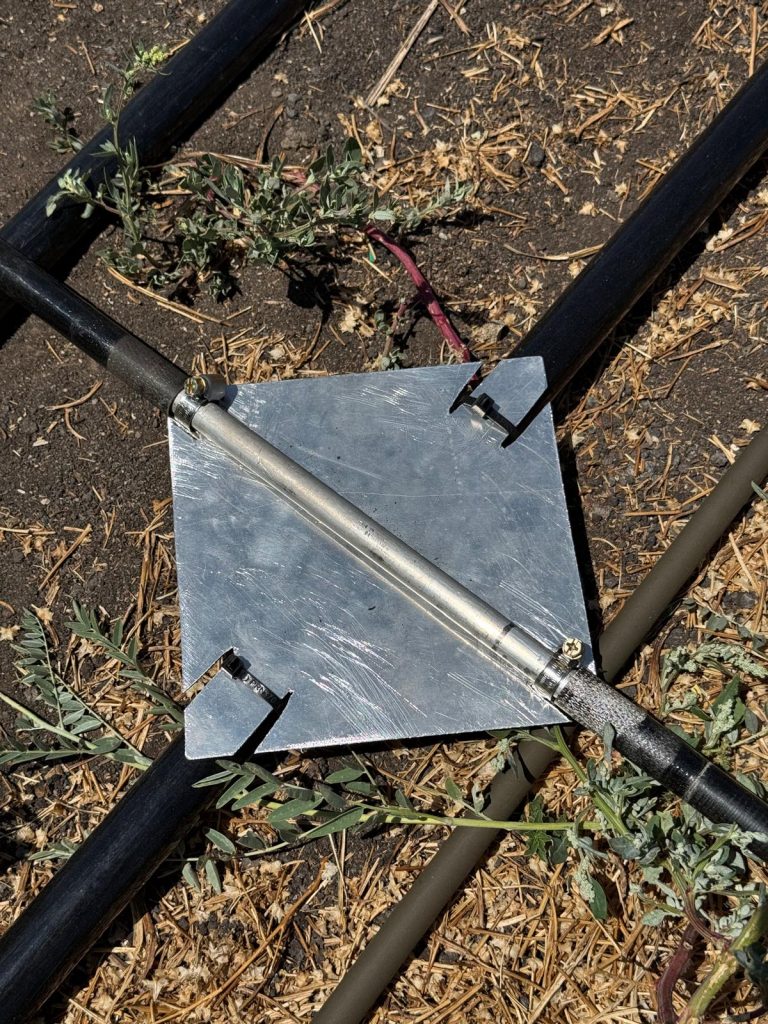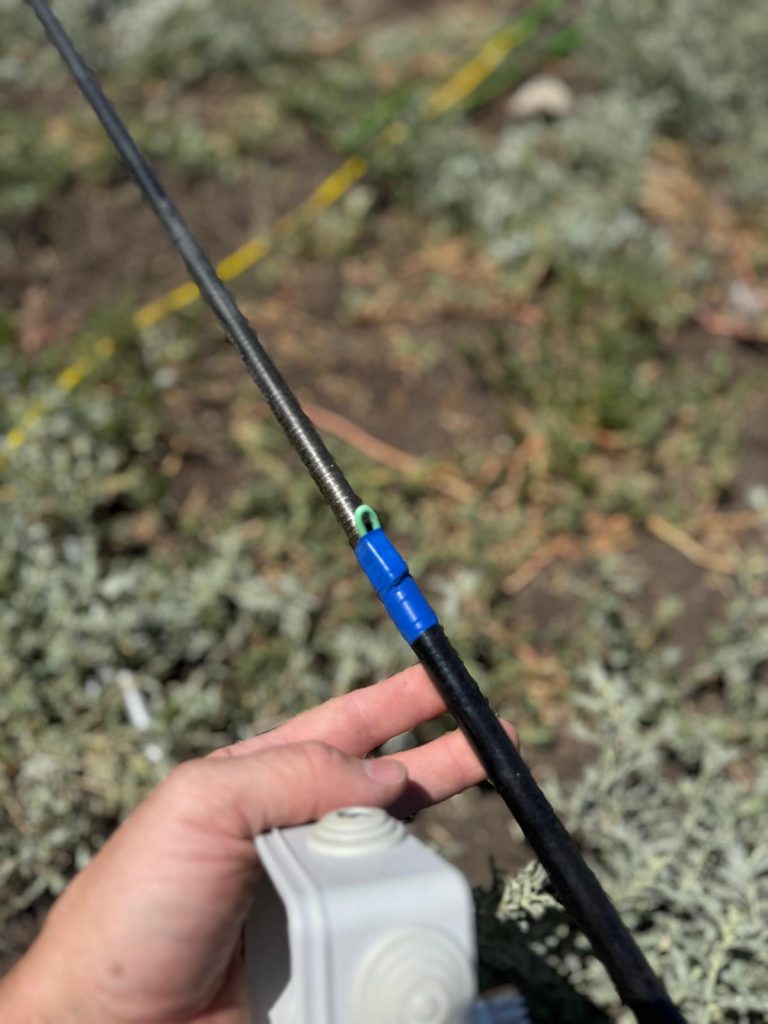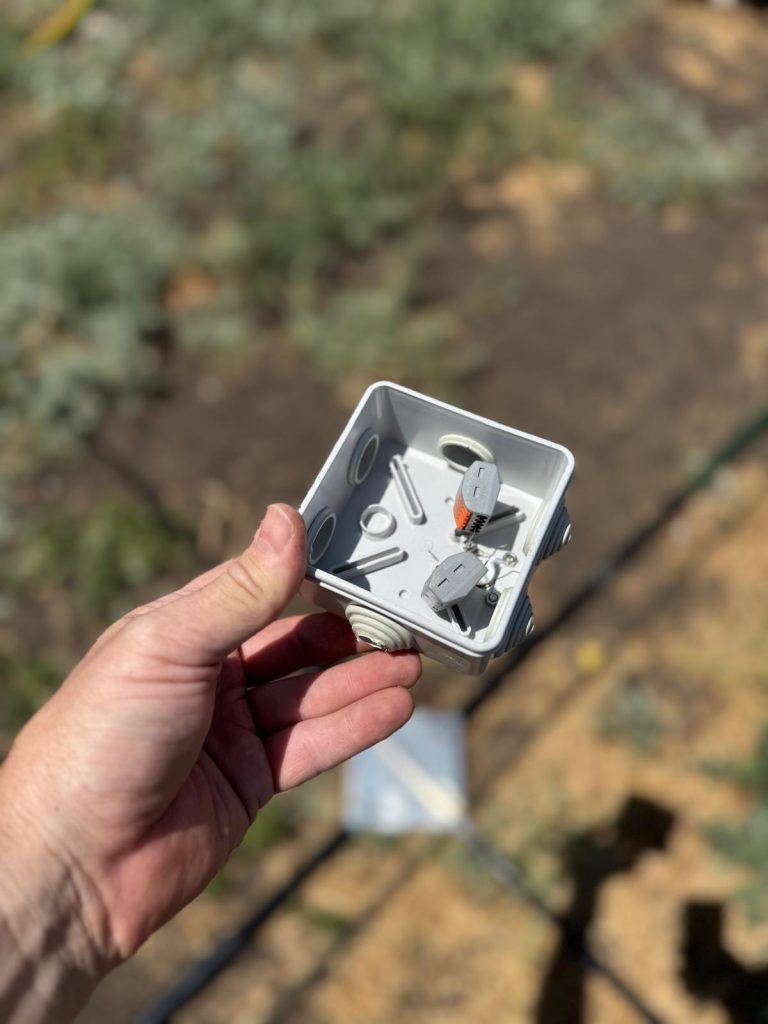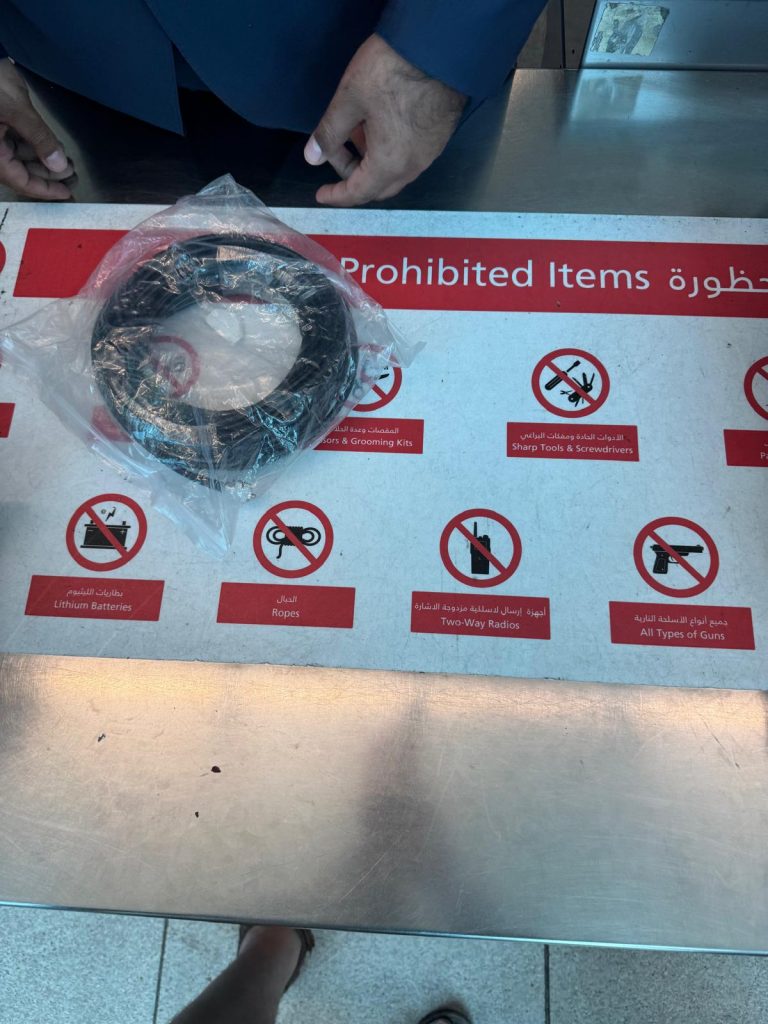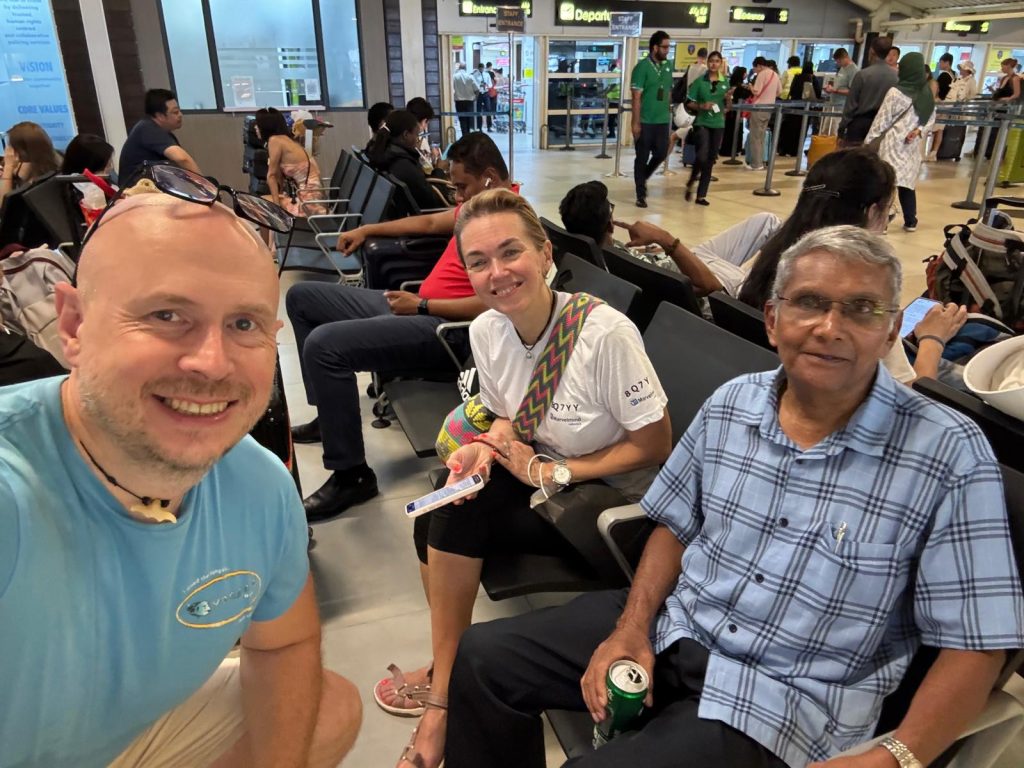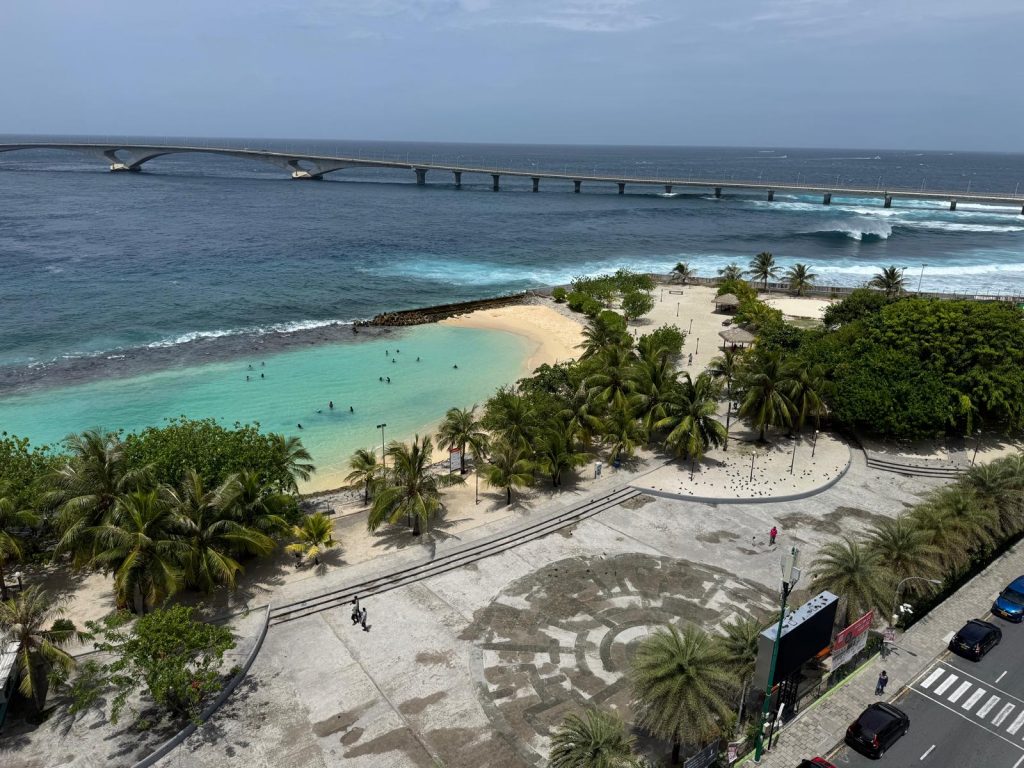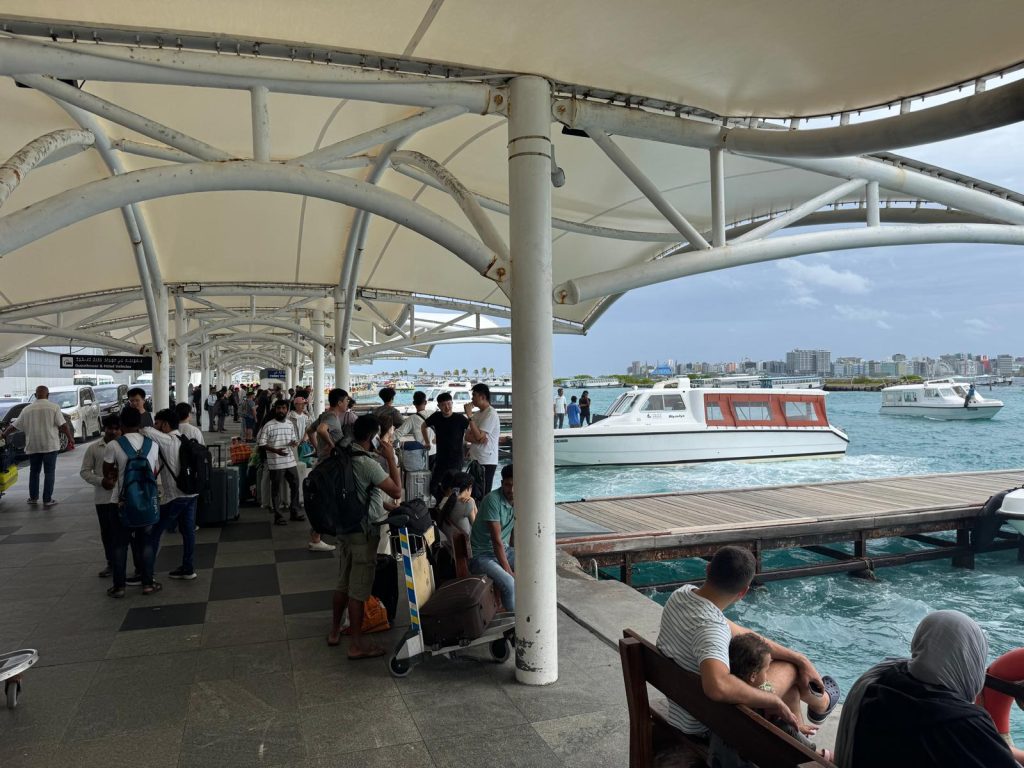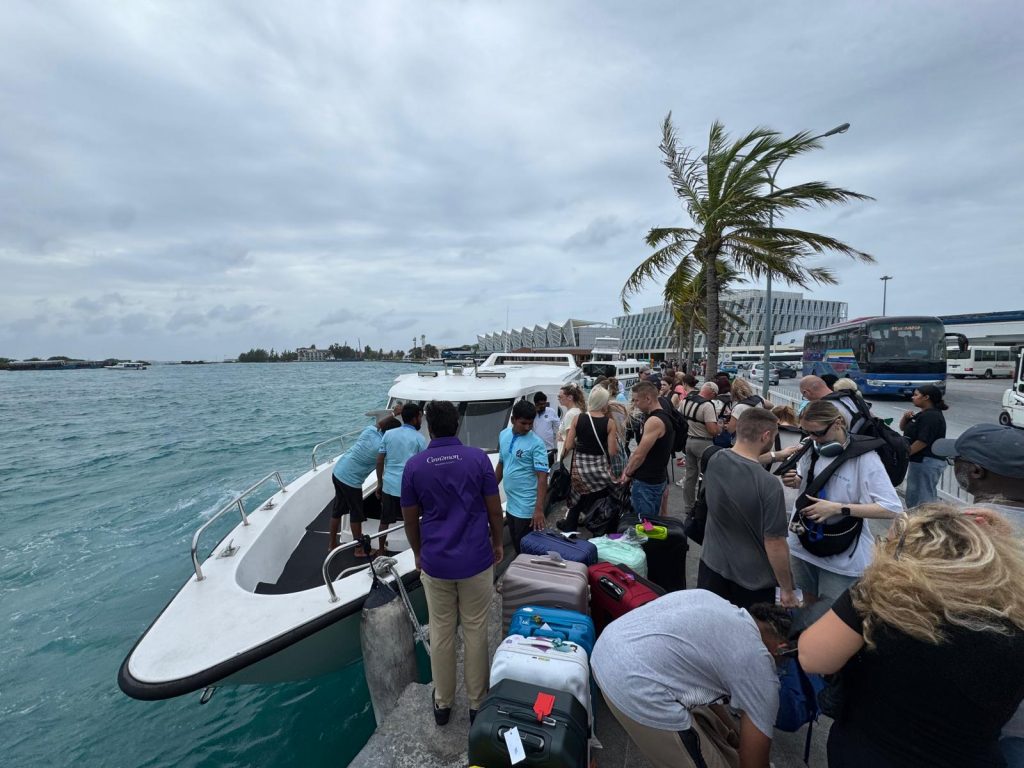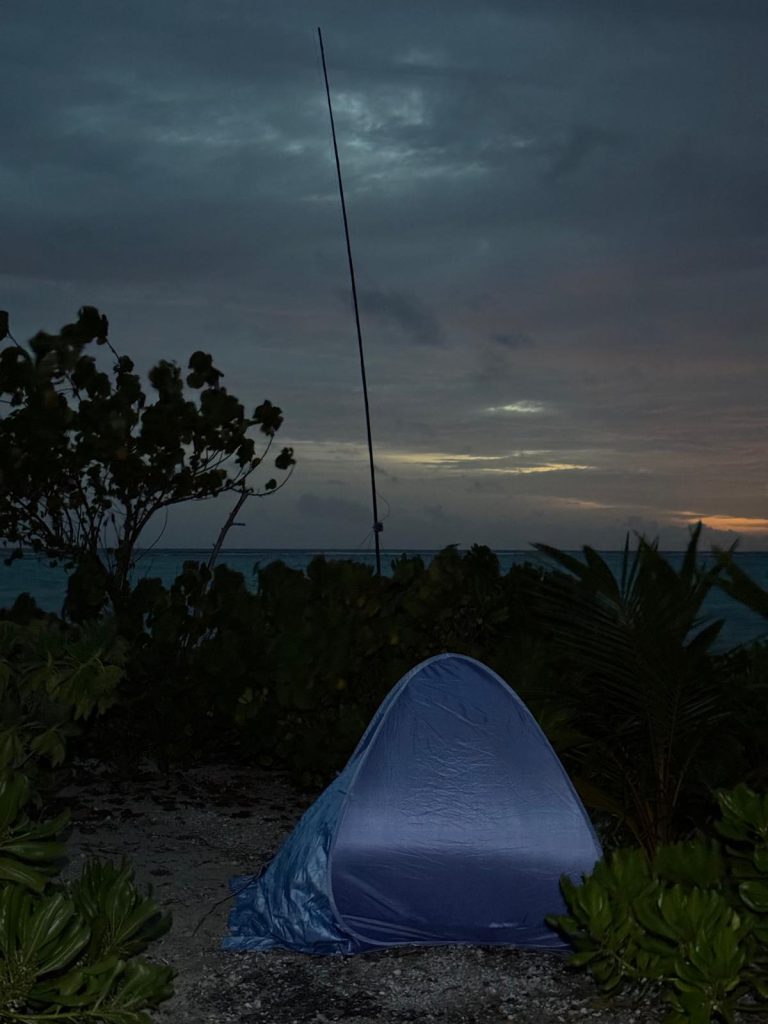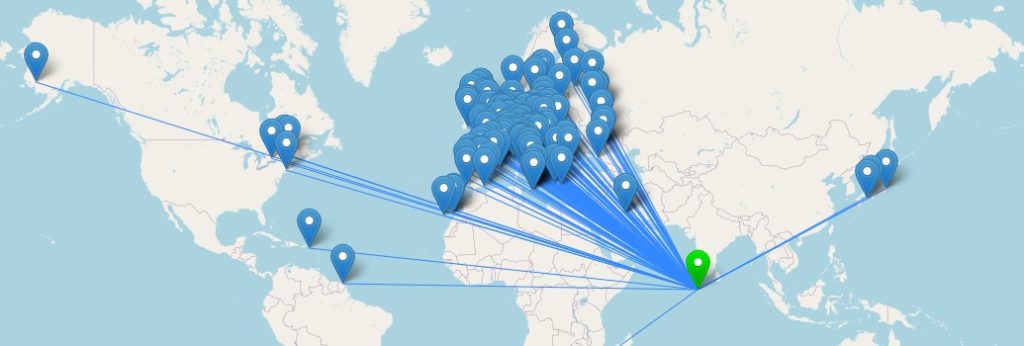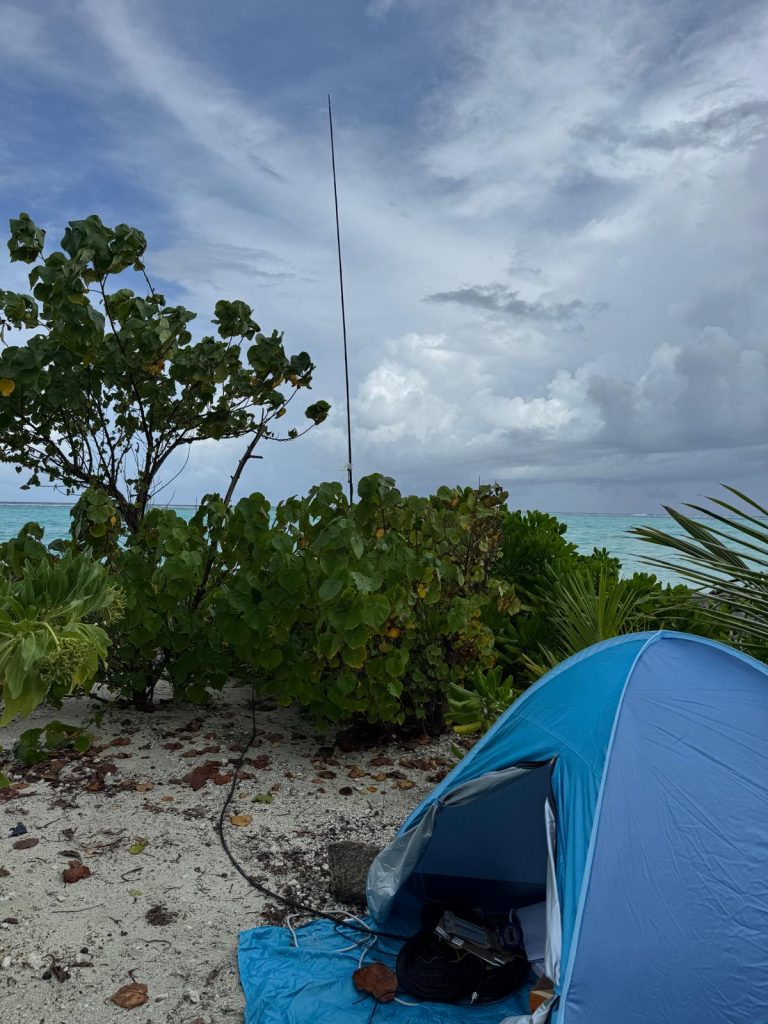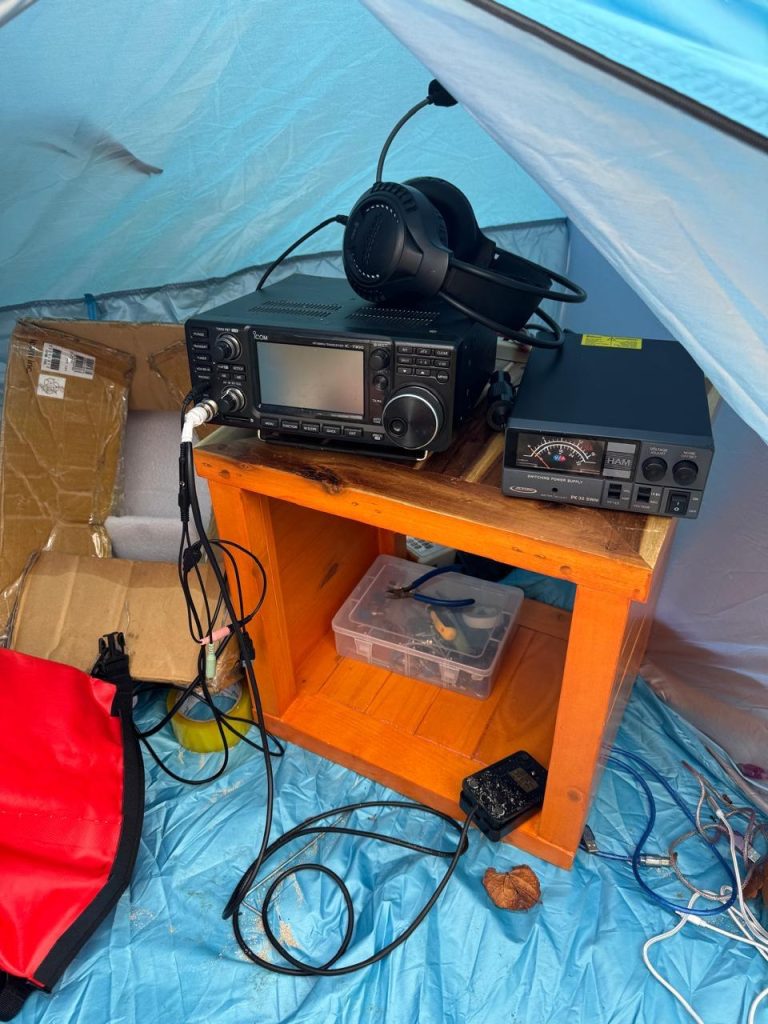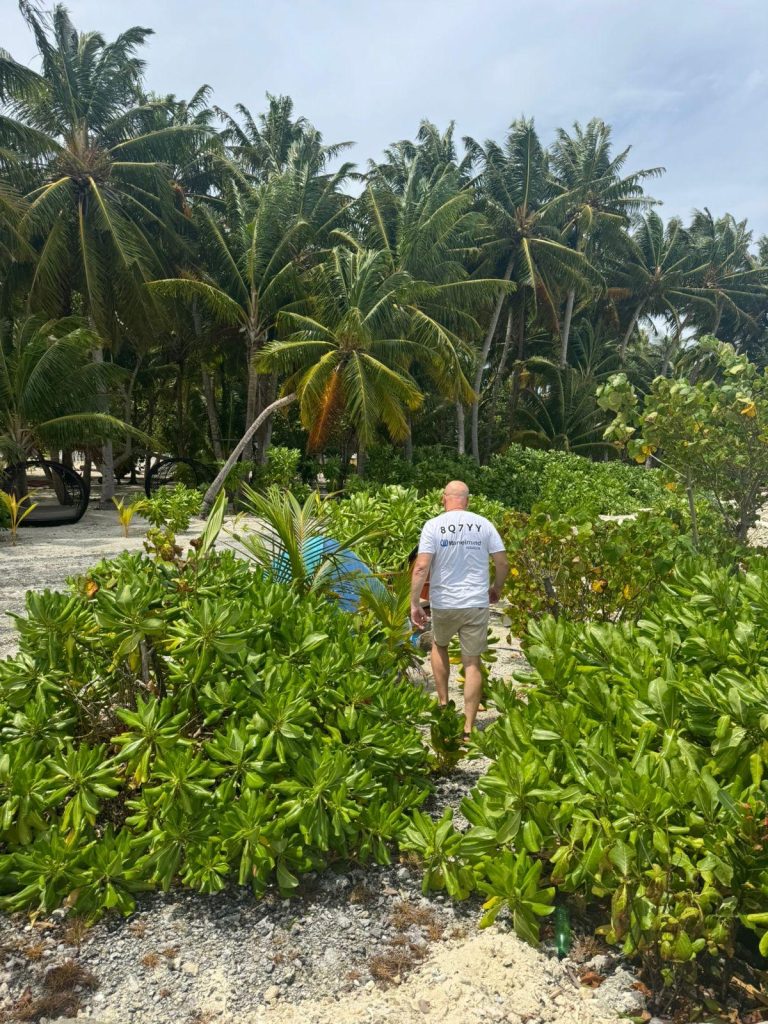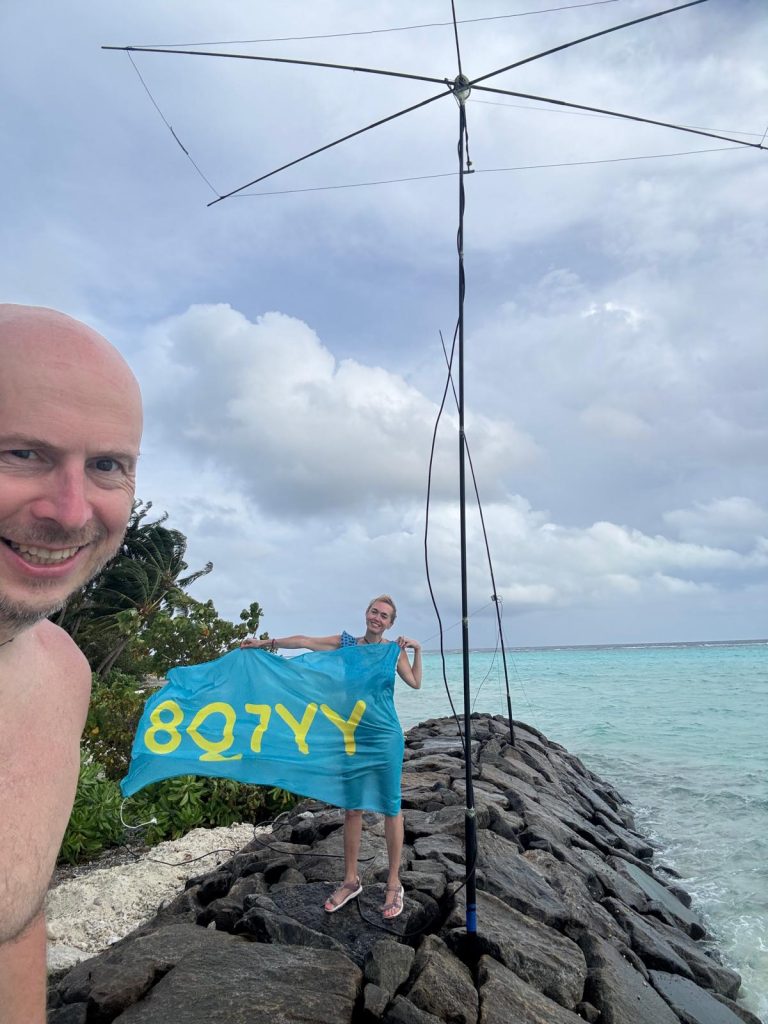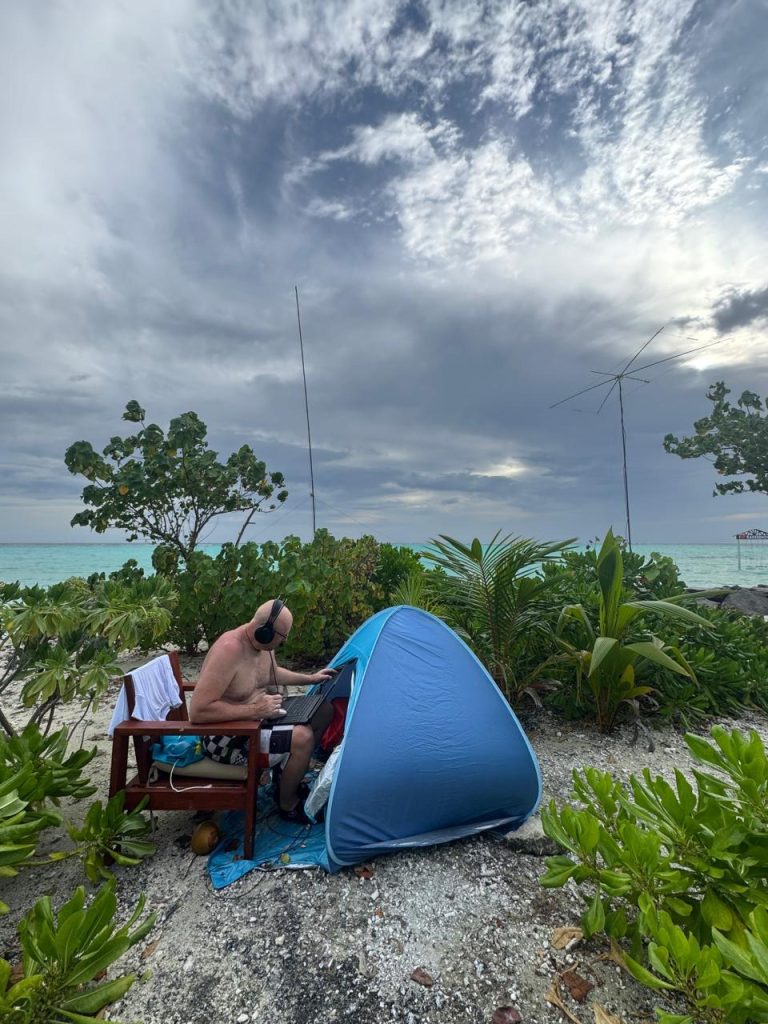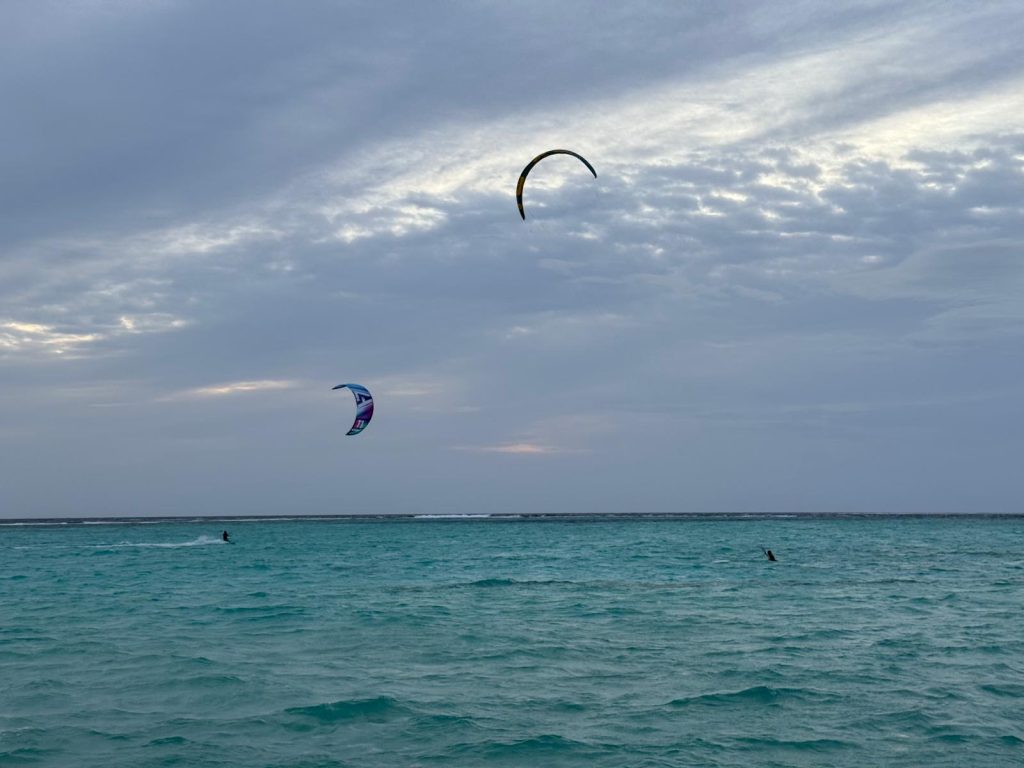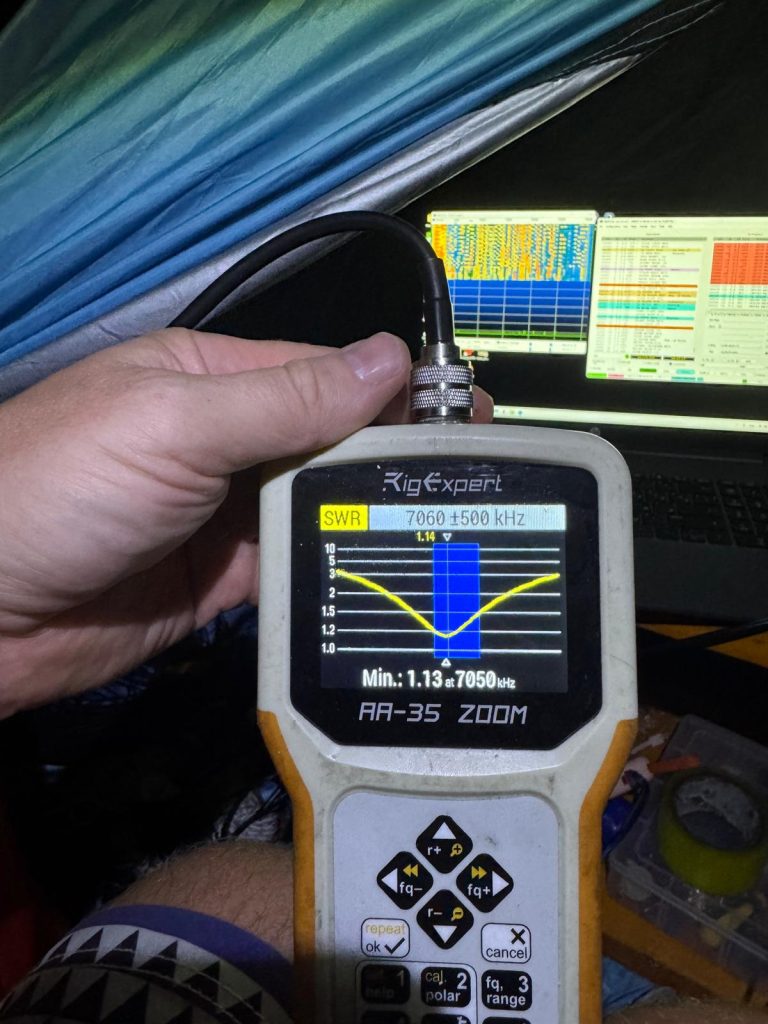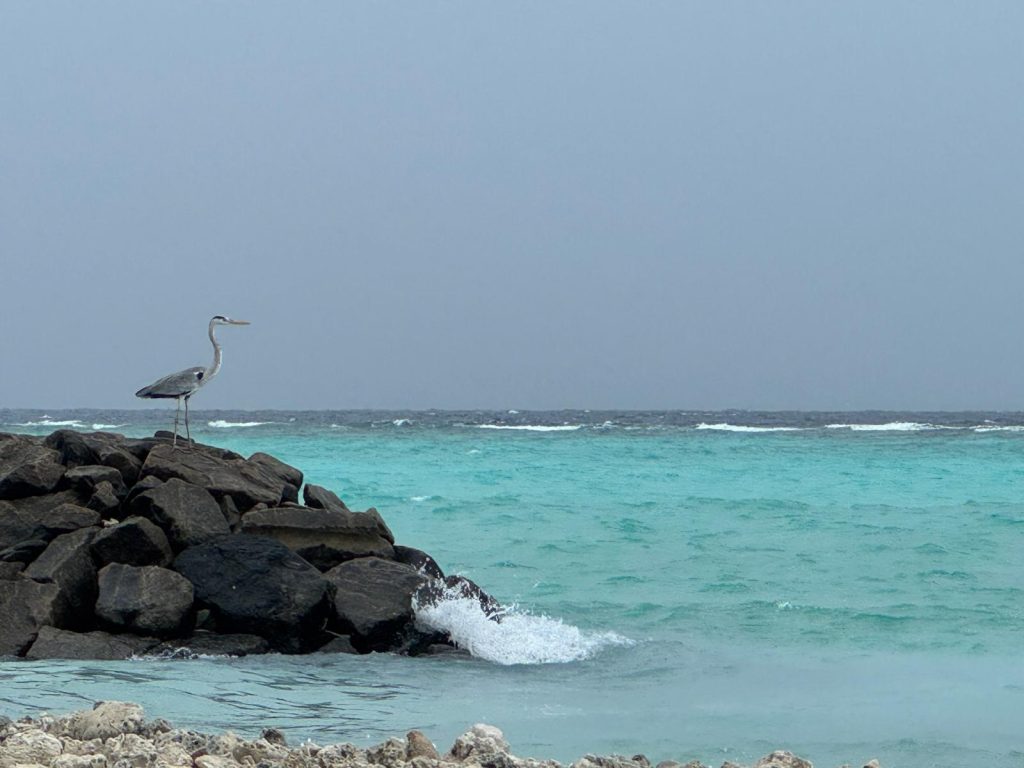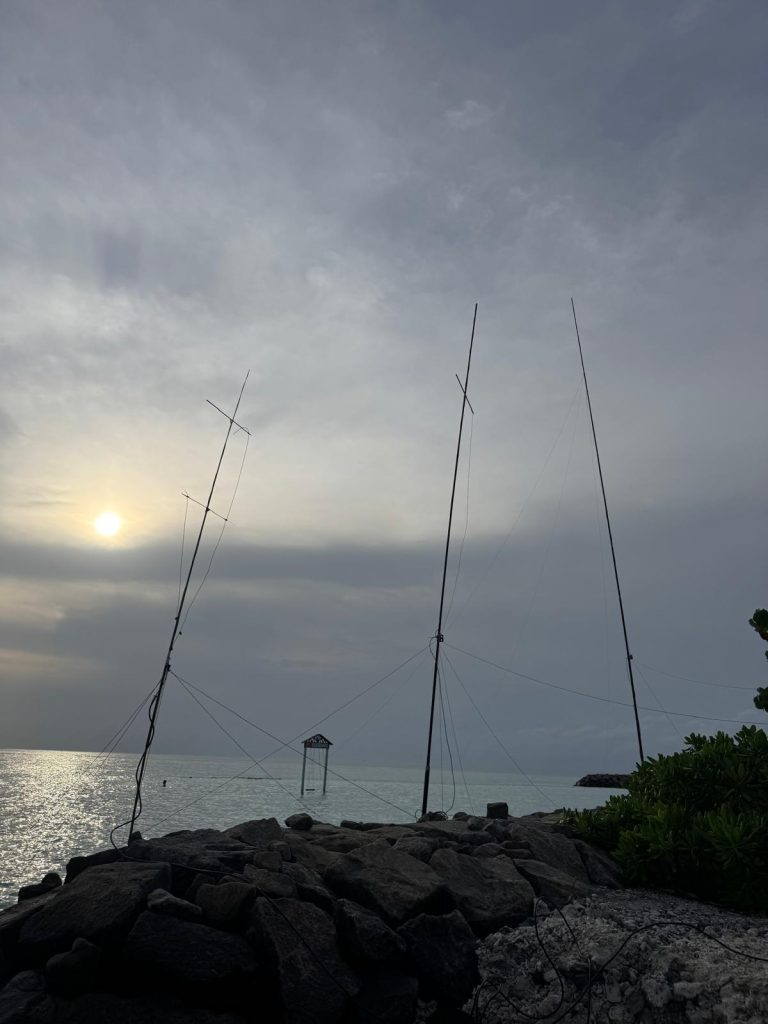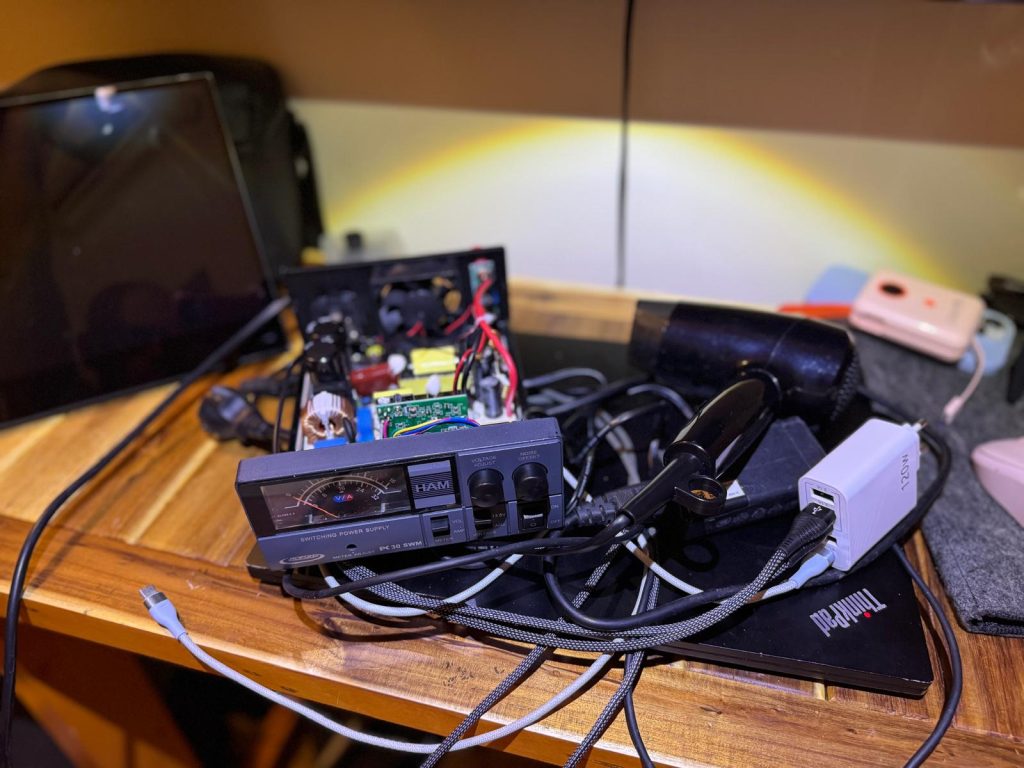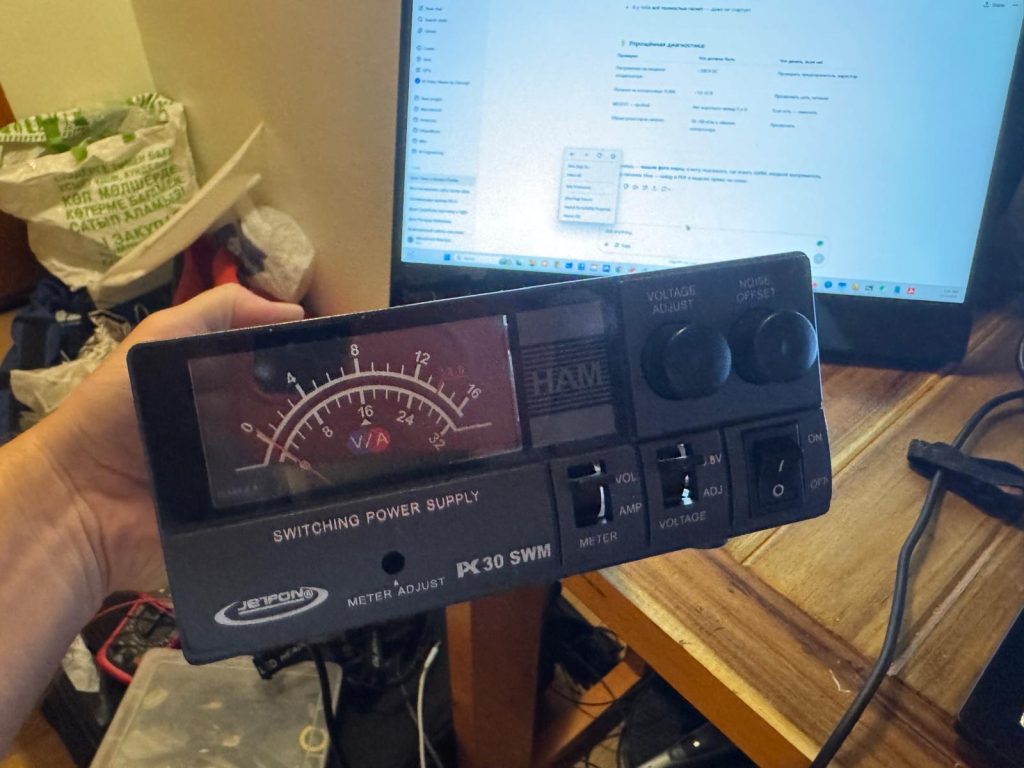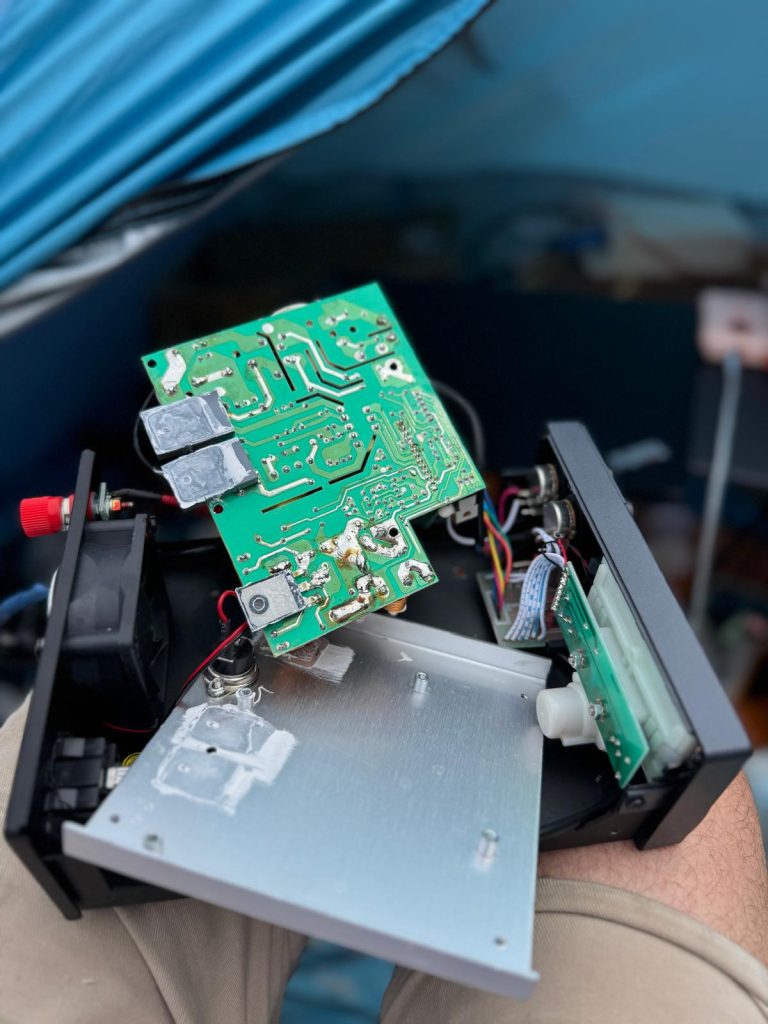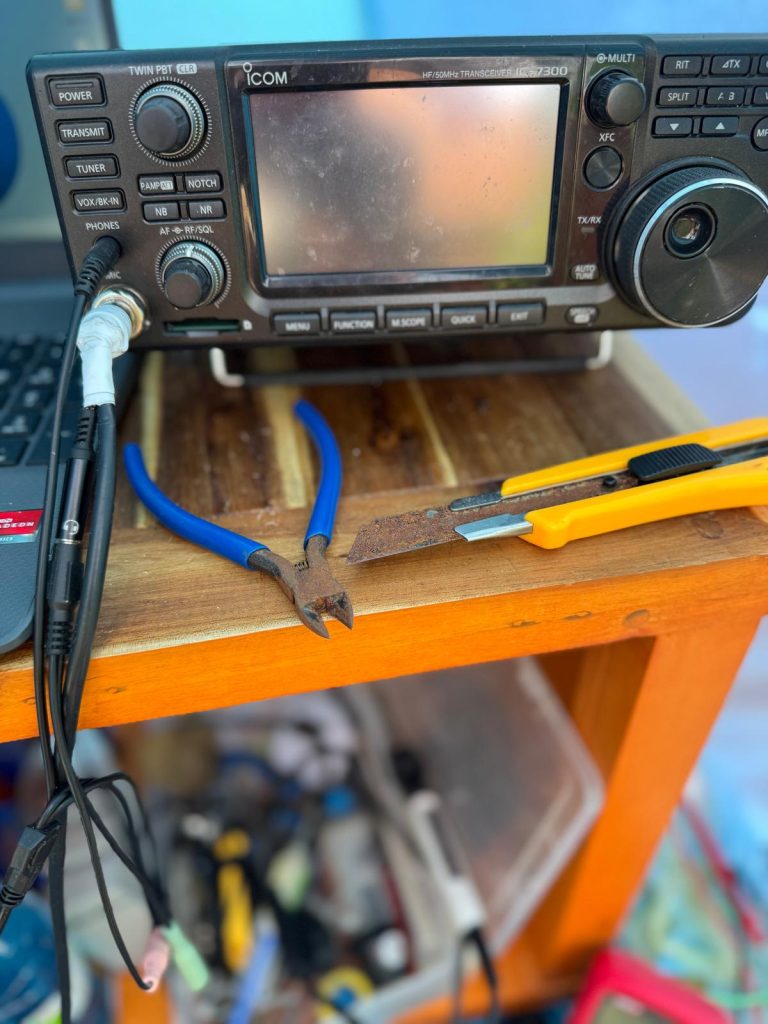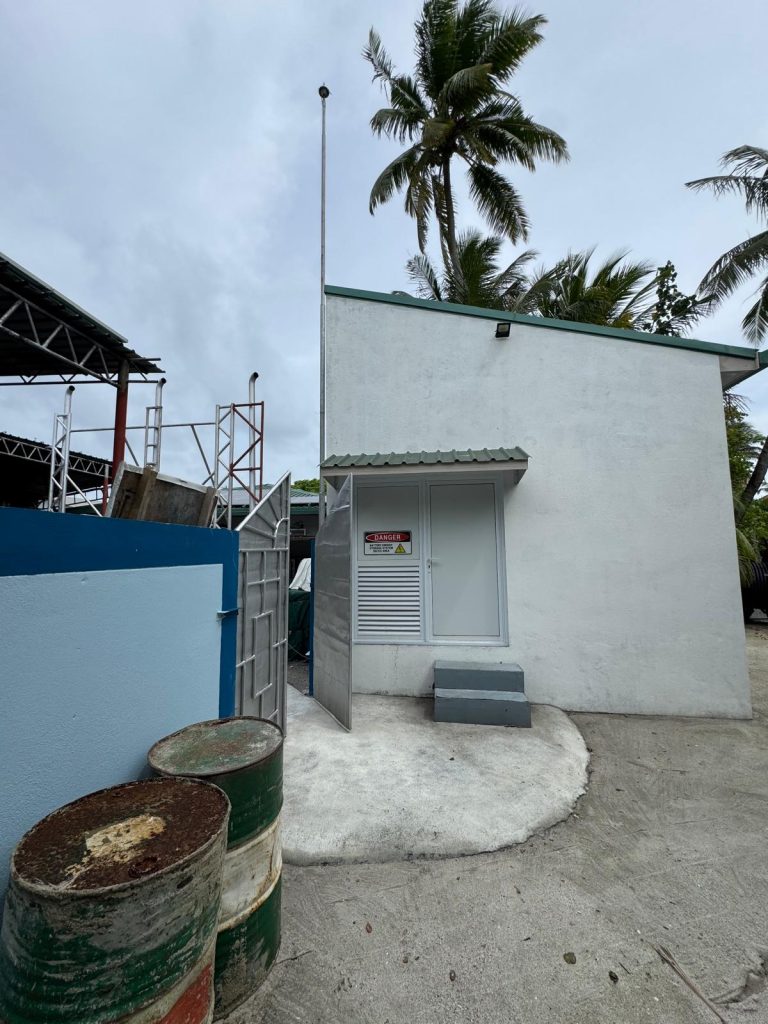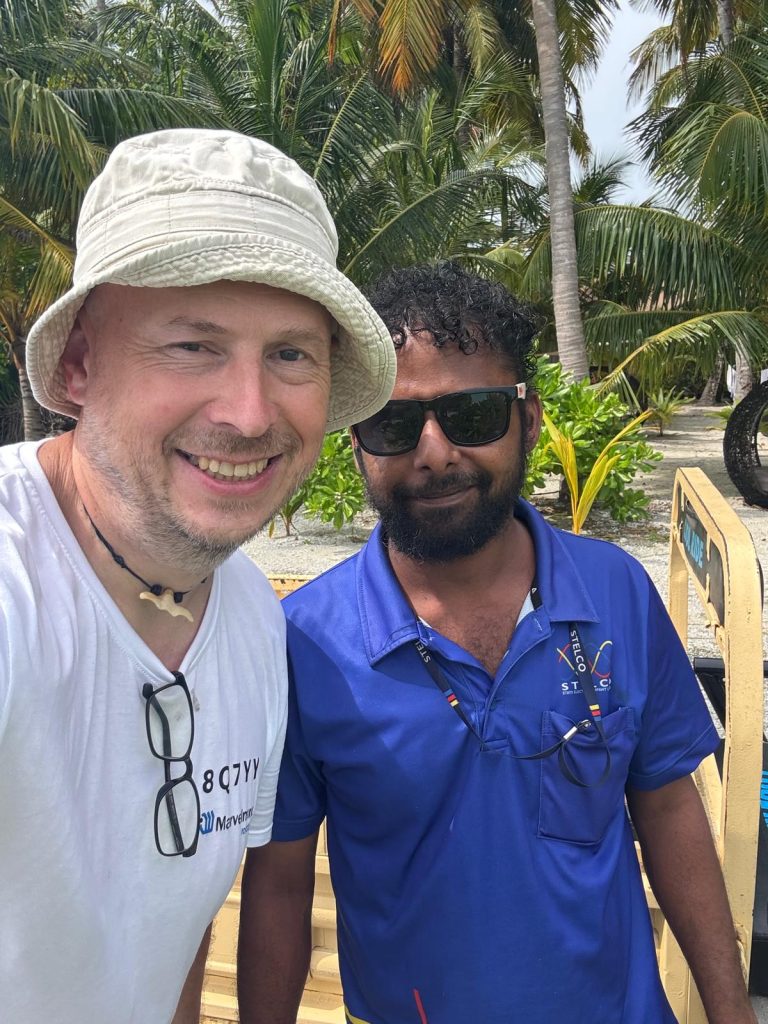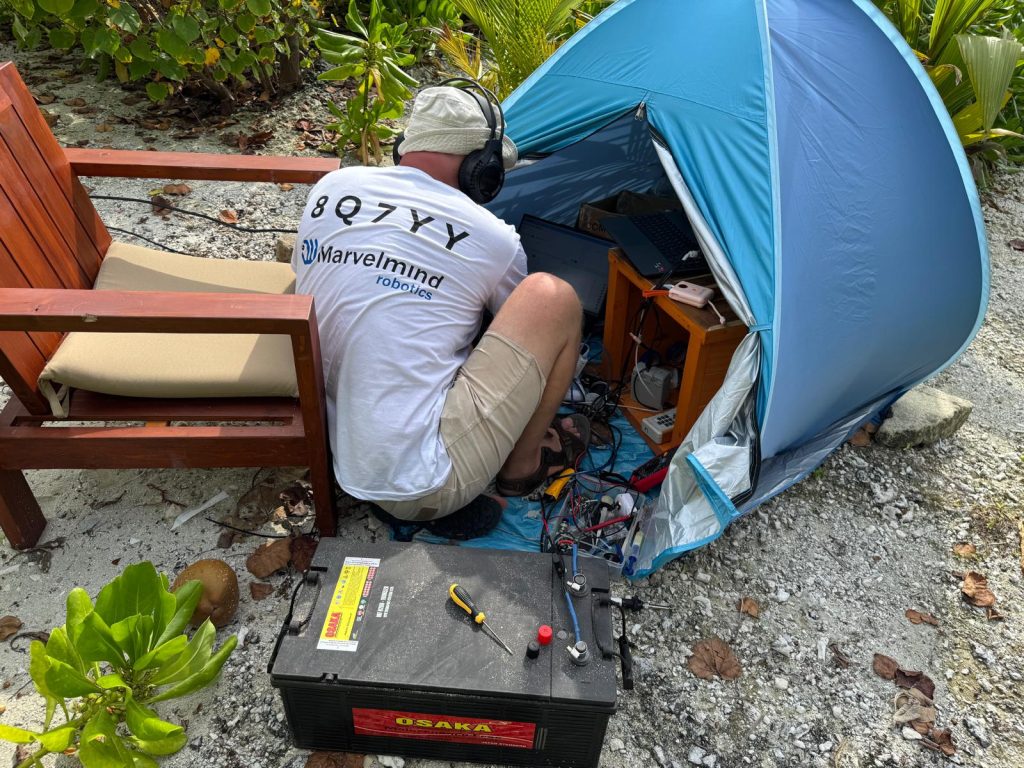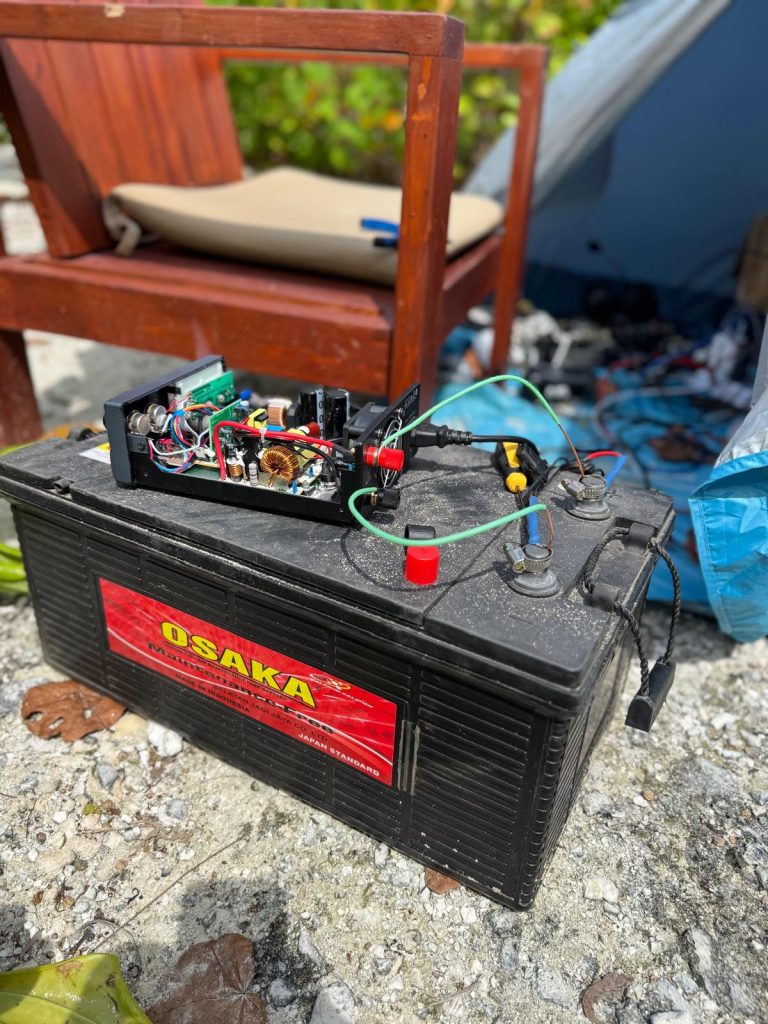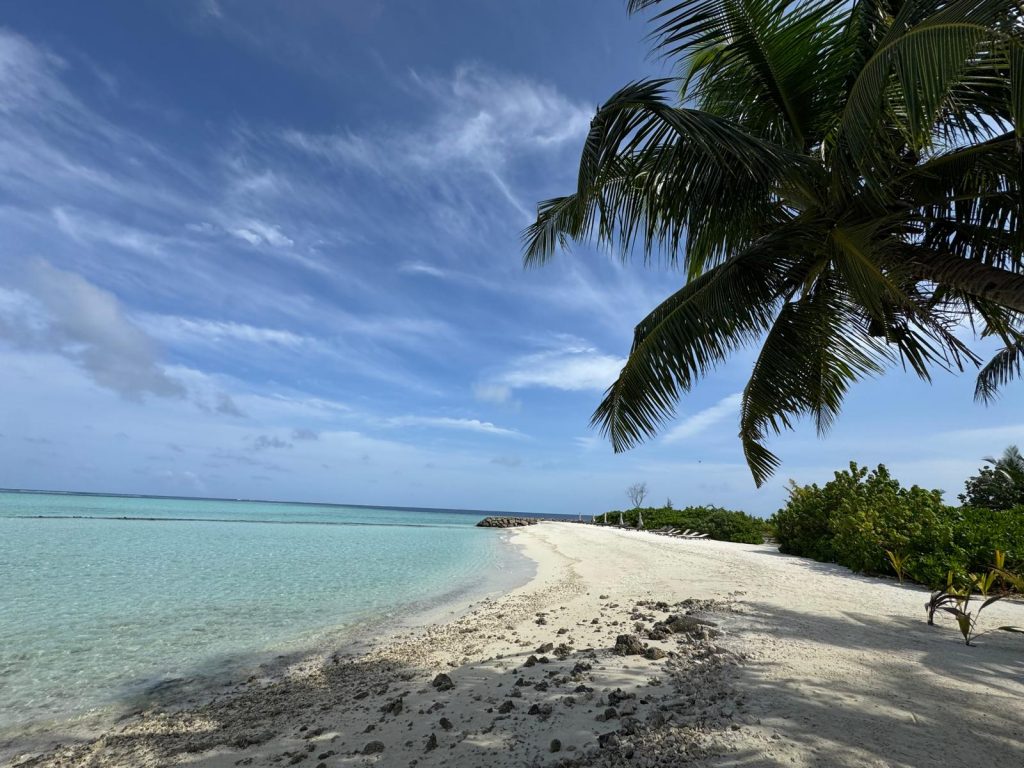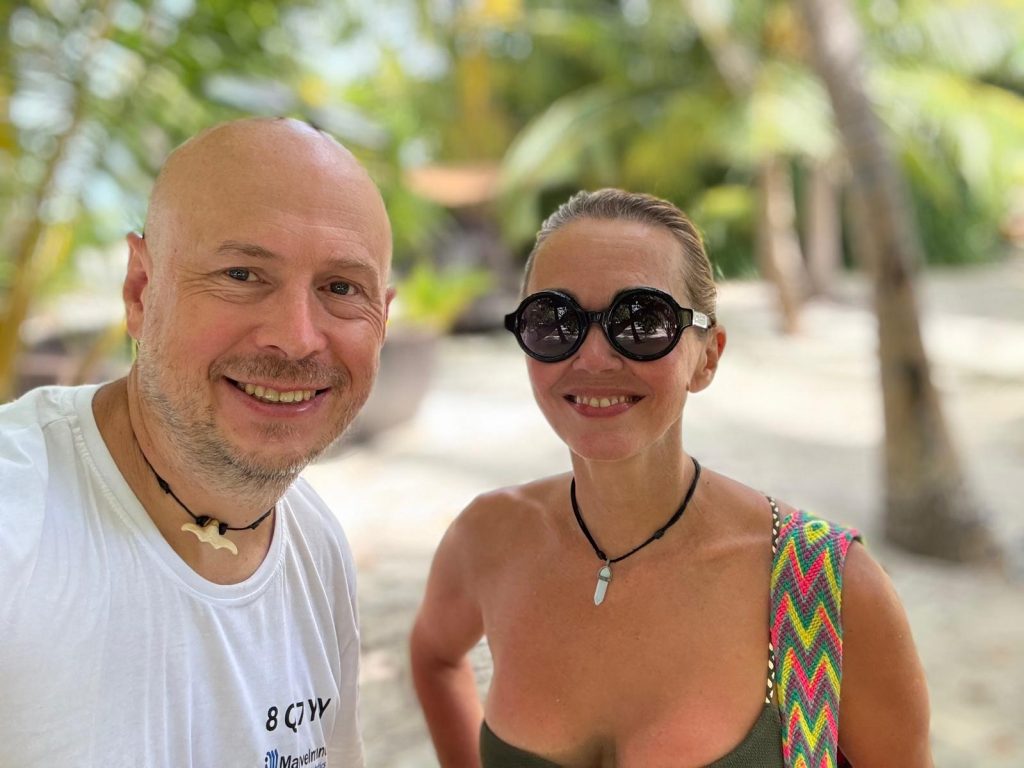8Q7YY - Rakeedhoo island - Maldives
Or how to celebrates one's wife's birthday properly 🙂
Wise men say that if you occasionally bring your wife to a warm, blue ocean, it pacifies them. Not for long, of course, but still … So, it was planned as a pacific trip to the Indian Ocean…
June 19, 2025 - an initial idea
But what is the point of traveling anywhere if you are without a Moxon, VDA, a few 1/4-wave verticals, and a small Icom, even if it is your wife’s birthday trip … 🙂
Location
As before, the final destination must meet a few criteria to be selected:
- Blue ocean with warm waters … For some reason, XYL doesn’t appreciate DXing in R1F and on her birthday, particularly 🙂 … I don’t mind R1F (but FSB minds ;-). However, we are firmly on the same page with my XYL that a lot of salty water in the vicinity of the antenna is excellent for a low-angle antenna intake… I am not sure my XYL operates in exactly the same terms, but she clearly agrees that a lot of warm salty water near the equator is good for the destination 🙂
- The location must be high enough in the DXCC most wanted list, at least, in some categories, for example, #83 in SSB or #37 in SSB on 6m, to spark sufficient interest
- At the same time, it must be within reach of a solo DXer to obtain licenses and permits between Zoom calls or other working activities. Thanks to Parker (8Q7PR) for the great help. I have the license in a few quick days
- Hotels and plane tickets must be reasonably priced
- Practical possibility to have QTH outside of cities for antennas, and hopefully not disastrous local QRN
The Maldives sounded like a nice option, meeting many of these criteria for a duo-expedition. We had traveled to the Maldives years before, but it was a diving safari, which was perfect. This time – DXing …
Hm… well… I must not forget that it is a birthday trip – not a DXpedition … I mustn’t forget. I mustn’t forget … But it looks like 55 kg out of 30+30 kg luggage allowance will not be bikinis or anything even close to that 🙂
Choosing a country is 1/2 work done. But within a country, a reasonable QTH must be found as well:
- Hotel owners must not be scared of 10-meter carbon masts with rope guys and a Moxon on top (and a few VDAs along the shore) and a 40-meter LMR400 feeder from our room or a 110-meter ~220V power wire buried into the sand
- There must be a place for the antennas and, hopefully, within 2-5 meters from the salty water to play with VDA antennas, for example
- And… – there must be low local QRN. It is hard to predict QRN, of course, but since the majority of my potential working directions will be north, if there are any local sources of QRN, they must be on the back of my Moxon or VDA, i.e., on the south. This means that the hotel must be on the north of the island, and the beam would be facing the ocean with no LED lamps and solar panels in front
- The smaller the island, the fewer sources of QRN … at least, in theory. However, a single nasty one in the vicinity can easily ruin all plans and calculations. I struggled but successfully overcame such local QRMs in Tuvalu, Vanuatu, and Fiji. Let’s see how lucky we will be in the Maldives
Rakeedhoo – “in 2003, the island was described as the smallest of the inhabited islands in the atoll,” – looked like a nice spot to meet expectations. Is it so or not, we will know the future – not today – June 21, 2025
All estimates can be ruined was incorrect input data. For example, many owners show their property on the map quite lausily… So, you thought it was truly beachfront and on the north, but it may be 50 meters behind other buildings in a densely packed street with no space for antennas and terrible QRN. Let’s believe in good luck 😉
June 24, 2025
- Middle-east flights are cancelled or not cancelled… Then, maybe, cancelled, but not from all destinations and not from all airlines… FlyDubai still flies from Almaty, though, but it has been cancelled from some other destinations. Hoping for the best
- There is still a chance for bad mistakes, but it looks like FlyDubai is a jackpot for me … The 30 kg/person luggage allowance means up to 3 pieces of luggage on FlyDubai. That is great news since the biggest struggle was with the masts – they are long… Even the custom-made 80-cm sections of the 10-m carbon mast are not small – not too heavy, but long. The fiberglass is 1.24 m when collapsed. Again, just a few kilos but long. Now, I can split the heavy but compact stuff – the transceiver, cables, wires – and the long stuff – carbon mast, fiberglass mast, tripod – into different pieces of luggage and not to pay the extra fee that can skyrocket the overall bill to the longer distances and several air travel sections
- It is possible to pay extra for luggage exceeding the 159 cm (length + width + depth) limit. However, it will add 300 USD for the return ticket, and the extra benefits are not as obvious as compared with the 3-piece per person allowance, which is a great deal for this trip. I will better use the spare money for dive trips, if the time allows it 🙂
Local remote operations? ...
I love my local remote operation in Kazakhstan. The idea is to replicate it on Rakeedhoo on a smaller scale:
- To install the transceiver and its power supply, the laptop and its power supply, a remote antenna switch, and a mobile phone as an LTE hotspot, in about 110 meters from my hotel room
- Bury 110 meters of thin, light ~220V power supply wire from my hotel room directly to the “remote QTH”. Calculations show that even 1mm 2-wire cable is enough for the 100-meter supply to have a reasonably small voltage drop for a 100W output power of Icom 7300
- And then enjoy the operations almost like home
- Thus, I plan to minimize the QRN to the absolute minimum by placing the antenna as far from the QRN as possible and as close to the water as possible. After all, the VDA antennas rely on the close proximity to the conductive salt water most of all
Of course, it is still possible to lay the feeder in an old, traditional way… but maybe it is not worth the weight of the feeder and extra losses for the not-so-strong 100W of the Icom 7300. It needs to be thought through and estimated.
June 28, 2025
Testing VDA antennas in the real island conditions is a primary lure for this DXpedition. Thus, they must be built, tested, and prepared in my QTH in advance since I am leaving on a business trip in will return only in a couple of days before departing to Rakeedhoo island.
VDA Original Design
VDA Implementation
The SWR and the central frequency of the VDA was satisfactory right away. So, I left fine-tuning to the island’s location because many things can be different there: the vicinity of the salt water, the mast broken, wind, etc. Let’s pray for the best and see 🙂
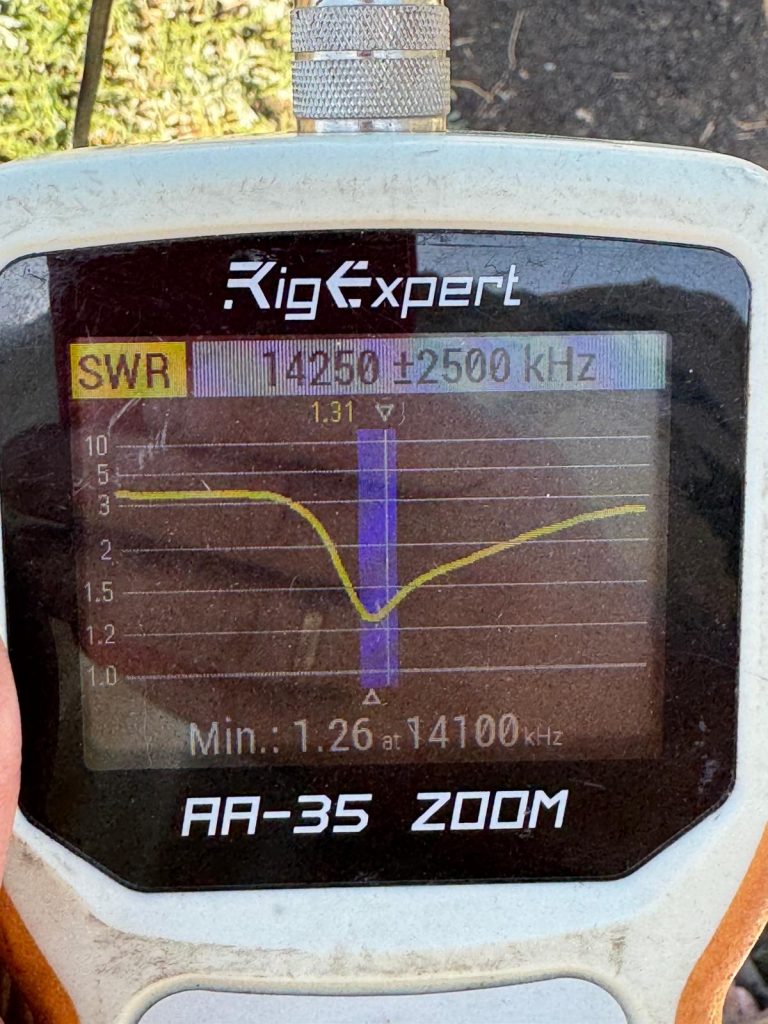
Central part – 170x170x2mm aluminium.
The central box is yet without a balancing ferrite coil. But it has clamps so that it can be reused with VDA wires for other bands as well.
Take Moxon Or Not Take
Since VDA is the keyword for this DXpedition, I am thinking whether to take the 10-meter Moxon at all, because VDA, in theory, has a higher “value per kg”:
- The 10-meter carbon mast + tripod + Moxon = 3.1 + 1.5 + 1.2 = 5.8 (kg)
- Alibaba offers fiberglass poles: The price for 3 pieces of 13.4m (12 sections, 120cm closed length) is $82/pc, with a mold fee of $ 7.30 (we will add one more section from the top end). Top diameter: 17.4*15.4mm. Bottom diameter: 49.4*46.8mm. Weight = 2.6 kg. Extra elements (horizontal boom, box, wires) will add, perhaps, 1 kg extra. That means that for 3.6 kg, it is possible to have a 20-meter – not a 10-meter – 2-element antenna with a comparable gain …
- As an added benefit, the same pole can be refurbished with a thin top 6.2m angling rod, for example, to create a slightly shortened, yet still well-tunable, 80-meter 1/4 vertical or more comfortable 1/4-wave verticals with raised radials for the 40-meter band and all bands higher. Luring, indeed
- However, the carbon mast and Moxons are proven, while the VDAs are not
- Moxon has a very deep backside attenuation, while the VDA, presumably, less, and I struggled a lot with the local QRN in the previous DXpedition. So, maybe, that attenuation is the single most important factor
- However, the 10 meter band doesn’t seem to be well-open… so, carrying nearly 6 kg for the expense of other options for lower bands may be a significant mistake … Let’s see, let’s see 🙂
July 16, 2025
- The flight is at 3:45 am from Almaty tonight… – it will be a long day 🙂
- I had been busy with work for the last weeks. Thus, not many updates on the radio
- Disassembled everything and packed everything yesterday. But not counting every 100 grams of the weight. So, there is an overweight of a few kilos beyond 30+30 kg. I will drop some items
- 2 x 13.4-meter fiberglass poles are the main parts of the antennas
- VDA for 20 meters – on one of the poles
- Verticals for 6/10/12/15/17/20/40 meters is another pole – all with elevated radials. Most likely, a Moxon on top of the pole (either Moxon or verticals, obviously 🙂
- If lucky with neighboring trees – an inverted L for 80 meters as well. Also, with resonating radials
- 2x1mm2 of 120-meter of power cord from my room to the tip of the island is made. And a tent to operating locally or remotely from my room
- A small Yagi for 6 meters – still a few hours to make it 🙂
July 18, 2025
A lot of movements and small but multiple critical obstacles 🙂
- FlyDubai tried not to let us on the plane because my wife’s passport expires in 5 months, and they need at least 6 months. Initial reaction by me: “Are you insane?! We are just transiting Dubai for 2 hours between the planes and not even leaving the airport”. However, a deeper search through ChatGPT revealed scary information: “FlyDubai enforces a strict rule requiring at least 6 months validity on passports, even for transit passengers not entering the UAE. This policy is not based on international law but rather airline-specific risk avoidance — they may be fined if a passenger is denied entry at the final destination. Only a few airlines, notably FlyDubai and Wizz Air, apply such stringent rules universally. Most other airlines allow boarding if the destination country permits entry with shorter validity. Because of this policy, your wife was nearly denied boarding, despite having a valid ticket and a passport expiring in 5 months.”. Maldives visa on arrival requires the passport validity of 1 month, which we had with a margin
- We were eventually allowed to board, but I already thought that our DXpedition ended without starting and starting searching Kayak for alternative routes, which would lead to gross disappointment and lost time and money
- In the plane in Almate, one of the passengers had some medical conditions, and the plane was delayed by 1.5 hours or so
- When we landed in Dubai with a delay, a security official took one of my 20-meter LMR240 cables during the transfer between the planes, citing another unusual rule that doesn’t exist in other airlines but is enforced by FlyDubai and Emirates: no ropes, cables, or belts longer than 1 meter are allowed in hand luggage. After a short but fruitless argument, I went to catch the departing flight to Male, but without the cable. Luckily, it was one of the three cables that I had taken with me. Otherwise, it would be enough to kill the DXing as well. Other cables were in the checked-in bag that were accurately tuned to the allowed 30.0 kg
- As a result of the delay in Almaty, it turned out that only one bag out of three arrived in Male because of the shortened connection time in Dubai. The rest was shipped with the next plane that arrived only the next morning – today
- Since the plane was half an hour delayed in Dubai, we missed the speedboat to Rakeedhoo island as well. The speedboat was shifted to 10:45 am today. But the sea this morning in Maldives was very rough and the boat was rescheduled to 3 pm, i.e., we lost nearly 1 day for DXing already
- Well, we are let to Maldives … but it is not guaranteed we will be let back to Kazakhstan since the issue with the passport will be only worse … The rule is strange but they seem to enjoy having strange rules. So, we will still have an adventure on the way back. Let’s see and hope for the best
On the positive side:
- We met Parker in person, who helped me obtain the 8Q7YY license and was extremely kind, meeting and greeting us, and bringing us souvenirs. I was ashamed that we didn’t get anything in return. Shame, shame, shame! We had a nice chat. Booked a hotel in Male for one night (as initially planned, frankly speaking, because I didn’t expect there would be an evening transfer boat to the island)
- And then we have been enjoying the stay at the Summer Beach hotel, which is facing the beach and the airport. A very nice view indeed
July 19, 2025
- Rakeedhoo Island is 60 km from Male. It takes a speedboat 1.5-2 hours of a rather jumpy ride
- Unfortunately, the weather wasn’t great yesterday, and the morning boat was cancelled. So, instead of 10:45, it was 3 pm, i.e., less time for antennas and DXing
- I thought it would be a few passengers per boat, but the boat’s capacity was 65 pax and packed to 90% capacity, at least
- Very solid 5G in Male. On the way to Rakeedhoo, it was 5G as well with spots of 4G and 3G
- We were the only passengers disembarking on our island. Other passengers seemed to go to the same resort 77 km from Male
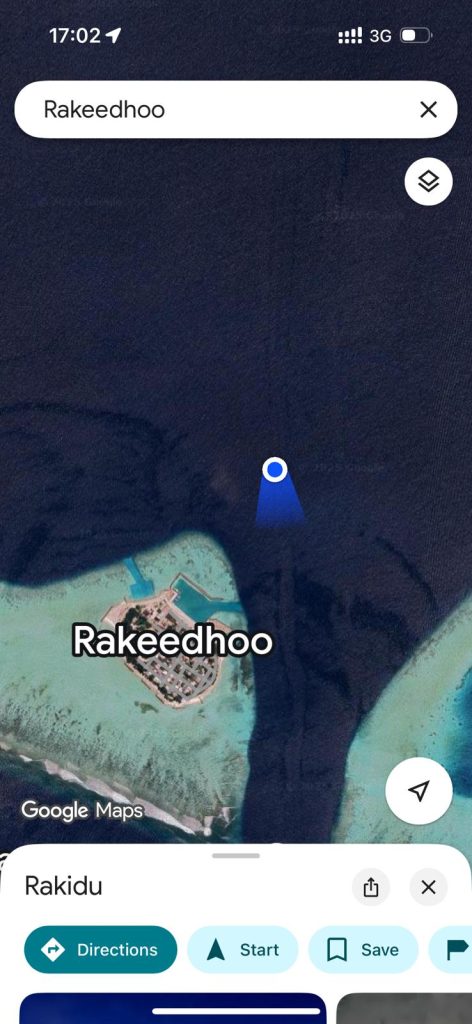
- The rules on the island are strict: you can walk on the hotel’s territory in a bikini, but fully dressed on the island … Well, the island is 300×200 meters, and 60 people live there
- The hotel has an unbelievably high customer rating on Booking.com… Let’s see 🙂
- After a short discussion, I was offered the nearest shore, on the west of our room, not the north as I had planned. It is about 40-50 meters from the room. An electricity cable (2x1mm2) was put into the ground quickly to supply my “remote QTH”
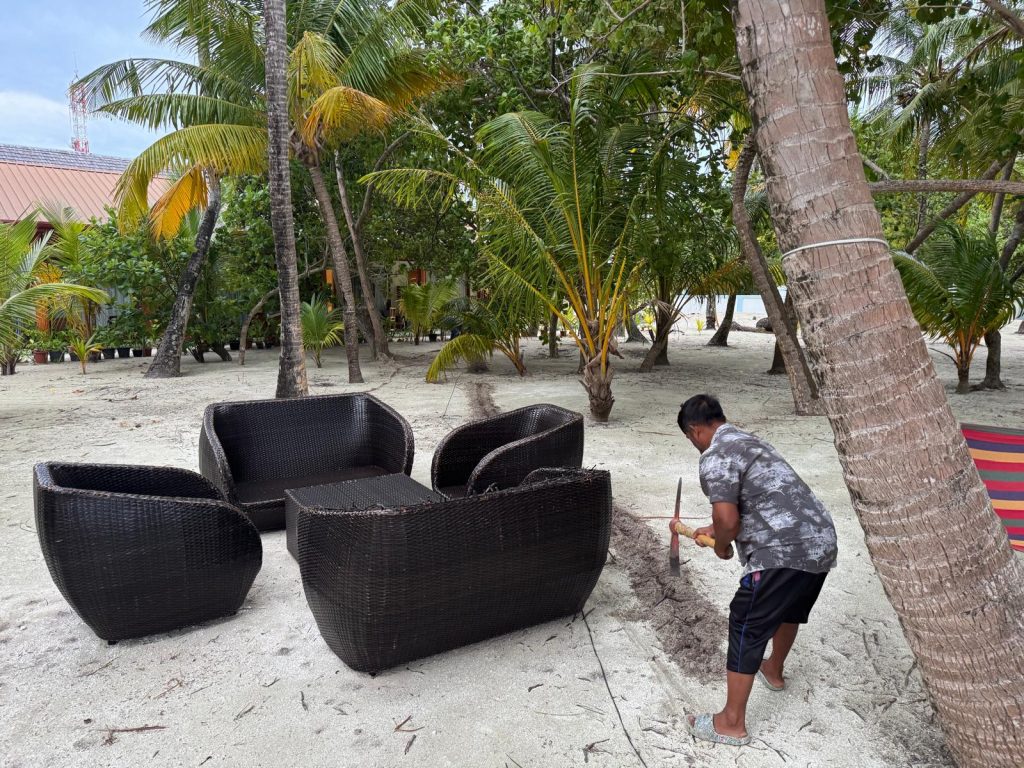
- Of course, my biggest concern was local QRN from the LED lamps and multiple solar panels. Only the real antennas could shed light on the real situation
- A 20-meter vertical with resonating radials was installed and tuned well into the darkness with a headlight
- The noise was S4-S5 on 20 meters. Not as perfect as it can be, but not as bad as it could be. So, I won’t be moving to the original spot
- Eventually, I ran pretty decent pileups that evening and went to bed around 2 am
Power supply for transceiver shuts down. Scary
There were scary moments when my power supply started shutting down in a protection of some sort. First, I thought that it was due to overheating. But when I removed the top cover, it became worse. Based on my questions, ChatGPT suggested:
- Overheating
- RF power leaking to the power supply
- Salty mist
The 2) option, I ruled out pretty quickly after short experiments.
It looked like a 1+3 combination in a strange way … I cleaned and removed quite a few large dead bugs from the power supply that I apparently brought from Kazakhstan. It didn’t immediately help. However, if I was operating on TX for less than a minute, the power supply remained okay and shut down for only a few minutes. Opening it worsened the situation. So, I closed and kept TX slots to the shortest minimum. It started running reasonably OK.
To my relief and surprise, I didn’t experience such issues today during the day. So, I am not sure what it was.
The morning finally showed how things really are because most of the time, I was operating and setting up in the darkness.
I was planning to run local remote operations, and a fast LTE connection on the island would allow that. But so far, I have been playing with antennas and have worked in the air only locally. Also, I am afraid, my neighbors wouldn’t be happy with my mumbling at night 🙂
Stones on the shore – a nice luck – very helpful for the masts. Besides, they give a couple of extra meters for the antenna and the radials.
Not only rainy but windy
I knew that there would be occasional showers for 5-20 minutes. But the wind wasn’t welcome. It was windy yesterday and even windier today – up to 14-15 m/s. Not 13-meter fiberglass poles, even with proper guys. It shall become easier tomorrow. Let’s see. Thus, no VDA on 20 meters yet, and the 10-meter Moxon is on 5-meter height instead of 10 meters.
But our new guests do enjoy the wind 🙂
July 21, 2025
- Very poor propagation on all bands. Upsetting
- Completely removed the Moxon. First of all, no propagation on 10 meters (not counting FT8) and very high wind
- It looks like I won’t even test my main antenna for the DXpedition – a VDA on 20 meters … – windy and it takes time from other activities … but let’s see
- The bad part is that forgot to take a short 50-Ohm cable with me. Thus, it is problematic to quickly switch and see the difference between the VDA and the vertical, for example. Without such a very direct comparison, there is much less fun because when there is a propagation, I have pileups on the verticals. When there is no propagation, the VDA may not help much
- Installed a 40-meter 1/4-wave with resonating radials. On a 13.4-meter fiberglass pole. Finally. Three guys from one – windy -direction. Several attempts were cancelled due to particularly strong winds. Had to cut/shorten the wires up to 0.6-1 m from the original length to reach proper SWR … – not apparent why so large discrepancy with calculated sizes
- 40 meters is a band where hams start chatting more and DXing less, which is upsetting because installing or bringing a 13-meter pole is significantly more difficult than bringing a 6-meter rod for 14 MHz and higher. I thought to play with the same pole and tune an Inverter L for 80 meters or even 160 meters, but I am not sure it is worth the efforts
- The local QRN on 40 meters – S8. Expectedly. But the hope is always a hope. On 20 meters – S4-S5. On 15 meters – S2 (with lights on) or below S0 during the day
This morning view:
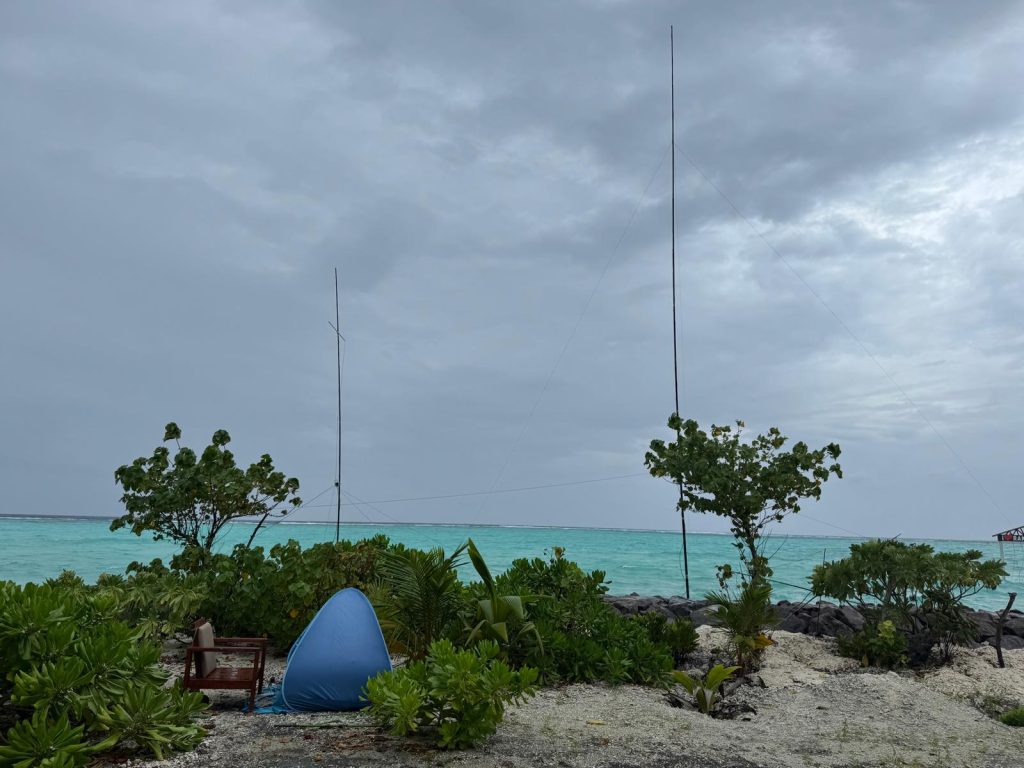
- Flew a drone for the first time here. It was a moderately sunny and moderately windy day. Still to check the footage
- No problems with the power supply anymore … – it scared me a lot during the first evening. Lucky me
- Installed WSJT-Z, which I haven’t played before, instead of WSJT-X and set Auto CQ for the night on the 40-meter band. But I forgot that my computer has special settings against stucking and it self-reboot at 4:05 am as planned. Thus, no FT8 operations after that time, unfortunately. I will have to remove it for tonight
A super-static bird … – it seems to be enjoying puzzling people (and other animals, I believe). It keeps the same pose for minutes and you start thing that this a sculpture or something artificial – not a living bird. Impressive
July 22, 2025
My XYL’s birthday 🙂
Other notes:
- Very impressive propagation on 20 meters yesterday. S59-59+ in both directions for the majority of QSOs. I went to bed only because I was already 1/2 dead, tired, and in order not to miss my XYL’s day 🙂
- 209 FT8 QSO during the night on top of SSB calls 🙂
- I didn’t operate the perfectly tuned 40-meter vertical because the 20 meters worked so well
- A calm and semi-sunny day was today. It is the first day without a drop of rain and stormy winds… nice! But just a couple of days left 🙂
- I eventually populated the third pole with 1/4-wave verticals with resonating radials for 6/10/12 meters – to monitor the propagation, mostly to operate rarely used by me WARCs, and to try to catch anything on 6 meters. If any signs of life, I will build a Moxon or a VDA for 6 meters to see how things go
July 24, 2025
The last day in a paradise. A lot has happened since the previous update. In short:
- Our new underwater camera was killed by salty water after 2-3 usages only. RIP 🙂
- Our car service told us that they managed to break something “because the car is old” and it is “not under warranty” … even worse, we have to wait for 2-3 weeks at least, which kills all our plans right after the trip. Fighting back and trying to resolve. There is a life behind DXing, after all 🙂
- We decided to update PHP on our main site www.marvelmind.com and the update replaced something somewhere… so, the website points now to a 1.5-year old version of itself. Insane. A rush attempt to restore to a version like it was before, made it worse … so, we are currently living a grossly outdated website and we lose money every day because of that … Sad
- And to nail the experience of the otherwise wonderful birthday – the power supply for the transceiver shut down to 2.4V after just a couple of SSB calls at night after that the birthday. The weather conditions were much lighter – evening breeze, colder, well after the sunset … and the transceiver and the power source had worked well in much harsher conditions the previous 36 hours – SSB and FT8. The situation with power looked devastating for the remaining days of the expedition
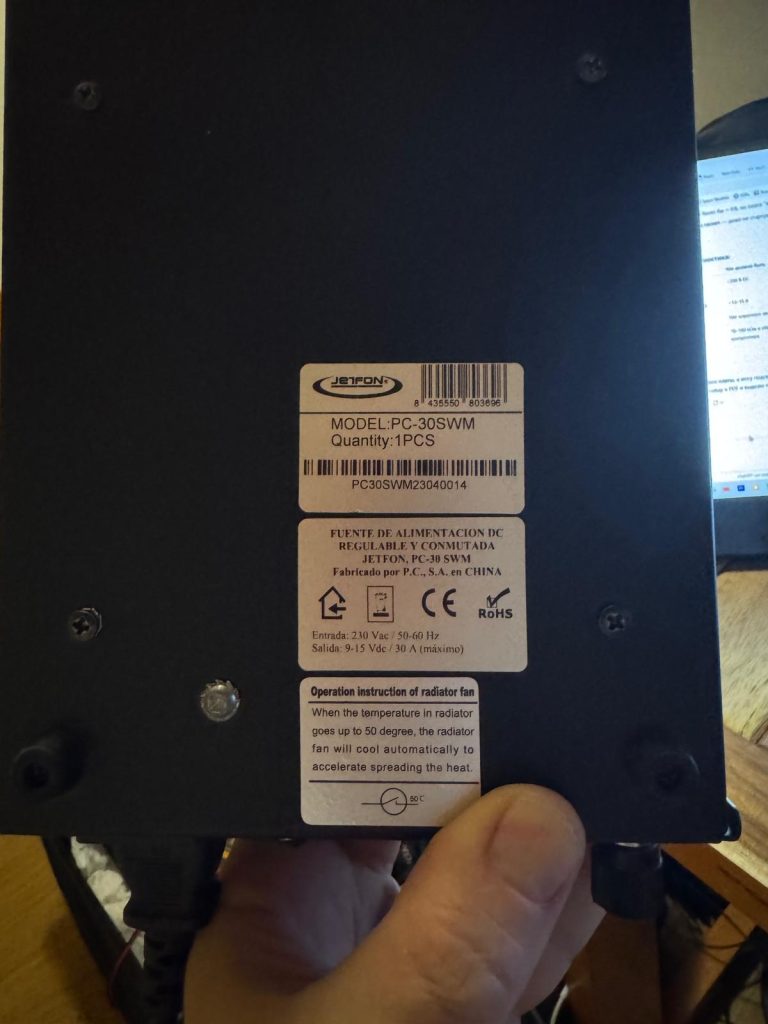
Of course, the primary suspect has been and remains a salty mist that corrodes every unprotected metal to become unusable in a couple of days.
But why did it eventually kill everything in the middle of the QSO?…
- I tried all possible things to recover the power supply. There was no bad smell. Nothing terrible was found after a deep visual and electrical inspection. But it gives 2.4V and doesn’t even light up the voltage meter
- Disassembled the power source eventually
- Even washed all electronics with water (unbelievable!) and dried them with a fan
- Tried to find a schematics. Found an original version of the Icom power supply from 1997, which gave many valuable hints about the block diagram. Helpful but not an exact schematics
- To make the story short, I found after 2-3 hours of trying at night that if I heat the power supply to 50-60 °C, it starts and I see 13.8V output. I thought that eventually, “I started the engine,” and things would work with the transceiver
- I even managed to make one QSO with 10 W … because a higher current dropped the output voltage below a cutoff for the transceiver, and the transceiver shut down. I thought to leave, at least, in FT8 with several W output overnight, but no – the power source handled about 10 W of SSB, but even a few W of FT8 dropped the output voltage below the limit
- The next morning, I checked everything again with a tester. Of course, I measured the capacitors – they fine – the right amount of uF
- So, after many hours of attempts, I desperately needed an alternative
- Either another source of 10-30 A and 12V or a battery. Both isn’t an easy thing to find on an island of 60 people (on paper but looks like 20 people in reality)
- A speedboat didn’t come that day… so, Male was ruled out pretty soon
- So, I walked around the island (200×300 meters) trying to find anything … – a spare large power supply of any voltage to modify or to take components or find a battery
- Again, to make the story short, very kind people from the state electricity company did have a battery and lent it to me for two days. It was like heaven to me 🙂
My new power setup looked like this and had wonderful pileups until about 2:30 am the same day (yesterday – July 23rd). But “all good things come to an end”, especially if they are measured in Ah. With 100W, the battery started dropping below the cut off voltage.
So, I set the transceiver’s output power to 20W or below, enabled an automatic CQing in FT8, and went to bed. It helped for a dozen QSOs, as it turned out in the morning. But the battery must be charged or another solution shall be found.
So, I decided to combine a semidead power source and a kicking voltage from a semidischarged battery. The logic was that the battery would handle to current peaks and the power source, which turned to a current source rather than a voltage source would be a charging source in between.
It worked 🙂
I started enjoying 100W again, but unlike a 20-30A of charging when kicked started, the power source was giving only 3-4 A, i.e., I was losing Ah quicker that I replanished them.
Eventually, the state-owned electrical company agreed to charge the battery for a few hours. So, I used the time update these pages 🙂
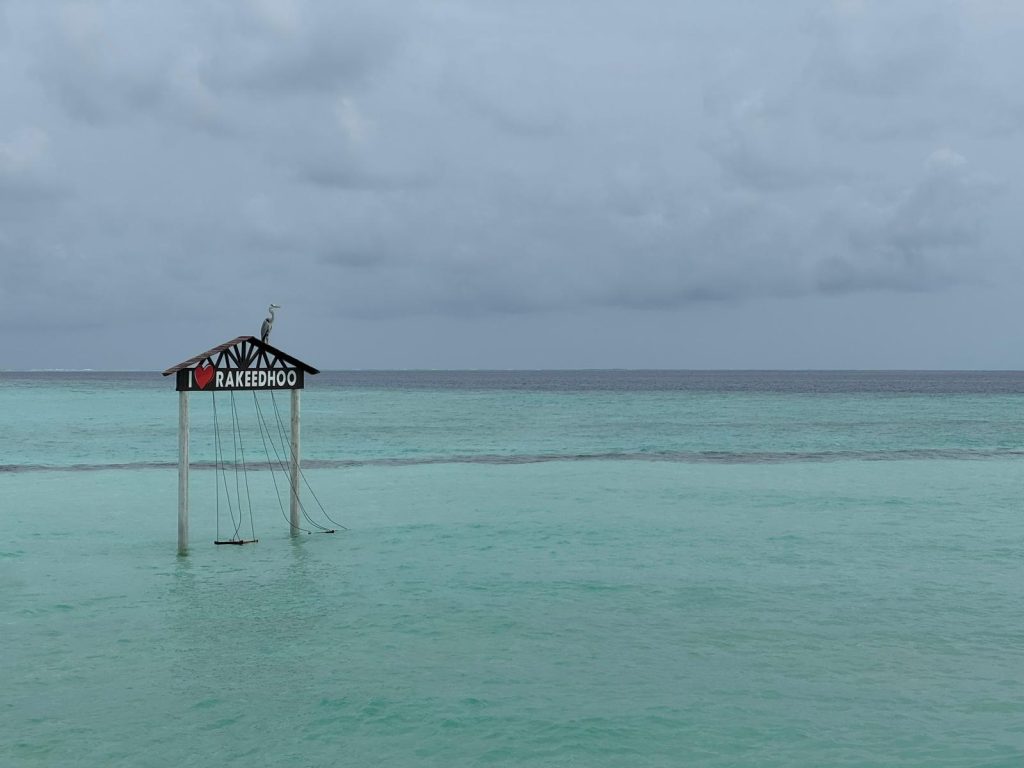
8 pm update:
- The 200 Ah battery I have would be a nice dream, and it would last for 36 hours, which I needed. However, it turned out to be closer to 20 Ah because my transceiver shut down after 20 FT8 QSOs that I enjoyed while disassembling other antennas. But those were in 40 meters, and manually selected Australia, which has been grossly underrepresented due to the relative proximity
- After a deeper discussion with the hotel’s manager, it turned out to be a decommissioned battery from the power house. It has a wonderful 13 V fully charged but starts dropping the voltage very quickly – far-far quicker than a regular 200 Ah battery would do
- So, I had to send the battery back for charging. And no FT8 tonight. Only a pure joy of human-to-human conversation … – and a longer lasting battery (hopefully 🙂
- All antennas except for the 15 m and 20 m bands are disassembled now
- Our speedboat is 7 am tomorrow and hopefully nice pileups when I get the battery back…
- It looks like I will rest when I return home. DXpeditions are not for that 🙂
11:59 pm update:
- The battery lasted for 99 QSOs with the last QSOs on 20-10 W power, which was still enough for 59 in France
- Well, it gave me plenty of time for packing and not risking the morning 🙂
- Though, of course, I would prefer a few more hours of operations 🙂
July 25, 2025
The return trip was pleasantly easy:
- No problems with FlyDubi due to the passport
- Fit nicely into the luggage limits
- No major delays
- No cable losses or other bothersome customs questions like “what is all this stuff about, and do you have permits?” 🙂
- Long (5:30h) layover in Dubai, but spent in the lounge, which always helps to catch up with work tasks and other real-life activities
Final statistics
- 2 144 QSOs
- 103 countries
- I thought that the 15m was the king, but the 20m band won. But 15m gave most of the fun, with 20m being always nice
- Only a couple of fully radio-operational days. The rest – with struggles of some sort: planes, winds, power supply
Random post
Categories
Tags
Lessons learnt (again 🙂
- Taking a tent + light power cord was a perfect idea indeed. Without the tent, many things wouldn’t even be possible at all. It partially solved a QRN issue from local sources by placing the antennas physically distant from them without the weight and loss of LMR400 or LMR240 cables. It gave a chance to be very close to the antennas and not to bother neighbors with wires and other scary things
- The 40-meter antenna doesn’t give the highest return on investment (local QRN (S8-9) + not too much DXing – mostly local chats). A much lighter and simpler setup for 15 m and 20 m returns huge pileups
- Even “proven” gear can fail you unexpectedly easy. I used the same transceiver and power converter in very similar conditions of salty mists and didn’t issues a year ago and was heavily struck this time
- A king of the last year – the 10 m Moxon – has spent nearly all the time on the ground due to high winds, first, then poor propagation, and then the antenna being locked to the 40 m 1/4-wave vertical. Kings are not forever. Tune to the moment
- Higher-gain antennas (Moxon, VDA, etc.) have a surprisingly limited practical usage range: when there is no propagation, they don’t help much; when there is good propagation, the pileups are broad anyway – adding more gain doesn’t help with pileup 🙂 So, the higher-gain antennas are useful in practice when there is a propagation, but it is poor, which is rather a narrow area to justify the efforts (load, time, complexity for the expense of other elements of the DXpedition). Or when there is a QRN to combat from the back of the antenna. But the long power cord + tent seems to be even a stronger solution in many cases
- There is no free cheese, and with directional antennas, I could miss more than gain because I would easily point them at a short path when the propagation was a long path, etc. – practical examples with KE5EE calls on 20 meters
- We took diving/snorkeling gear, but it wasn’t aligned with the time and weight of the radio. Focus. Focus. Focus. However, the fear of missing an easy-to-reach opportunity is strong, of course 🙂

